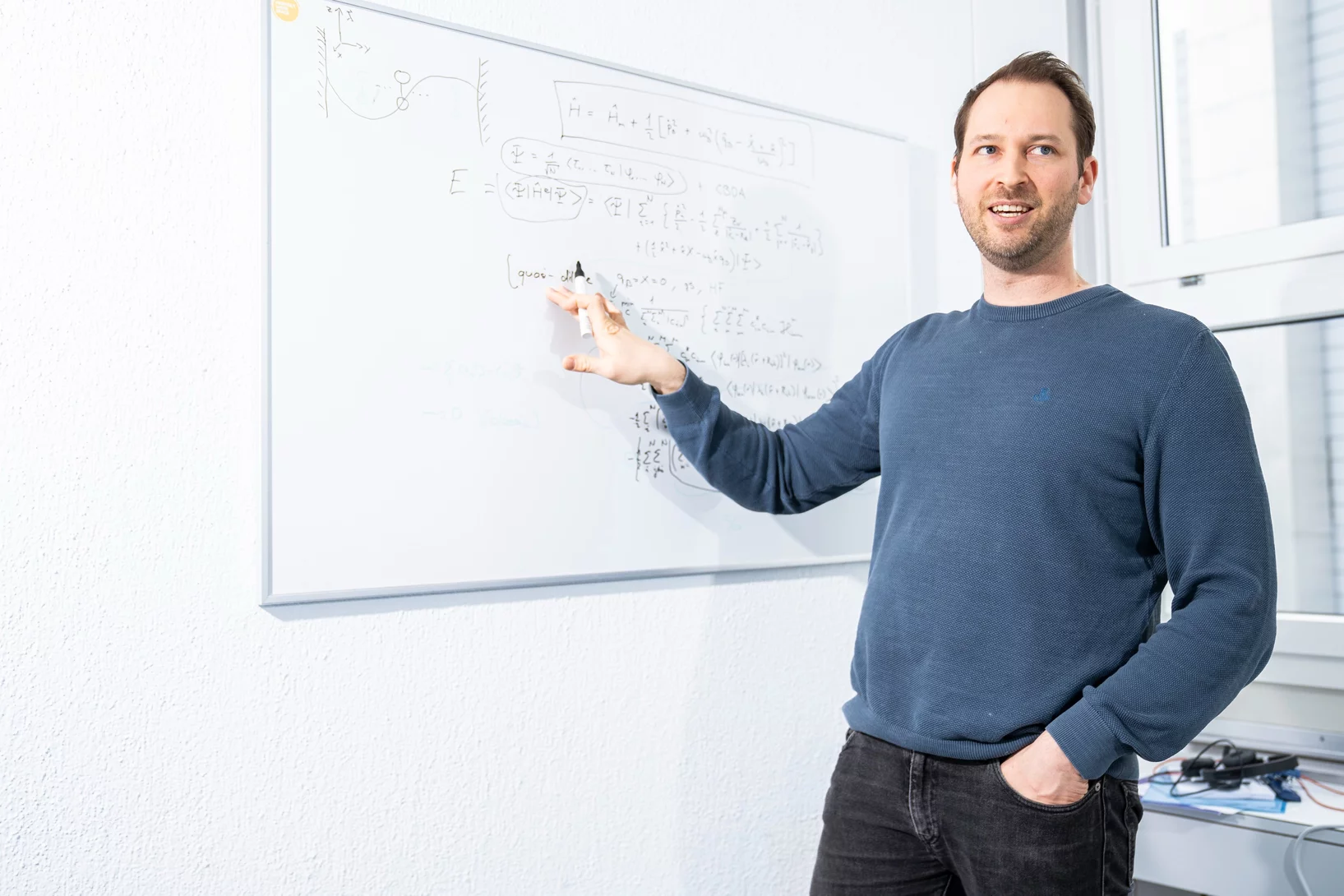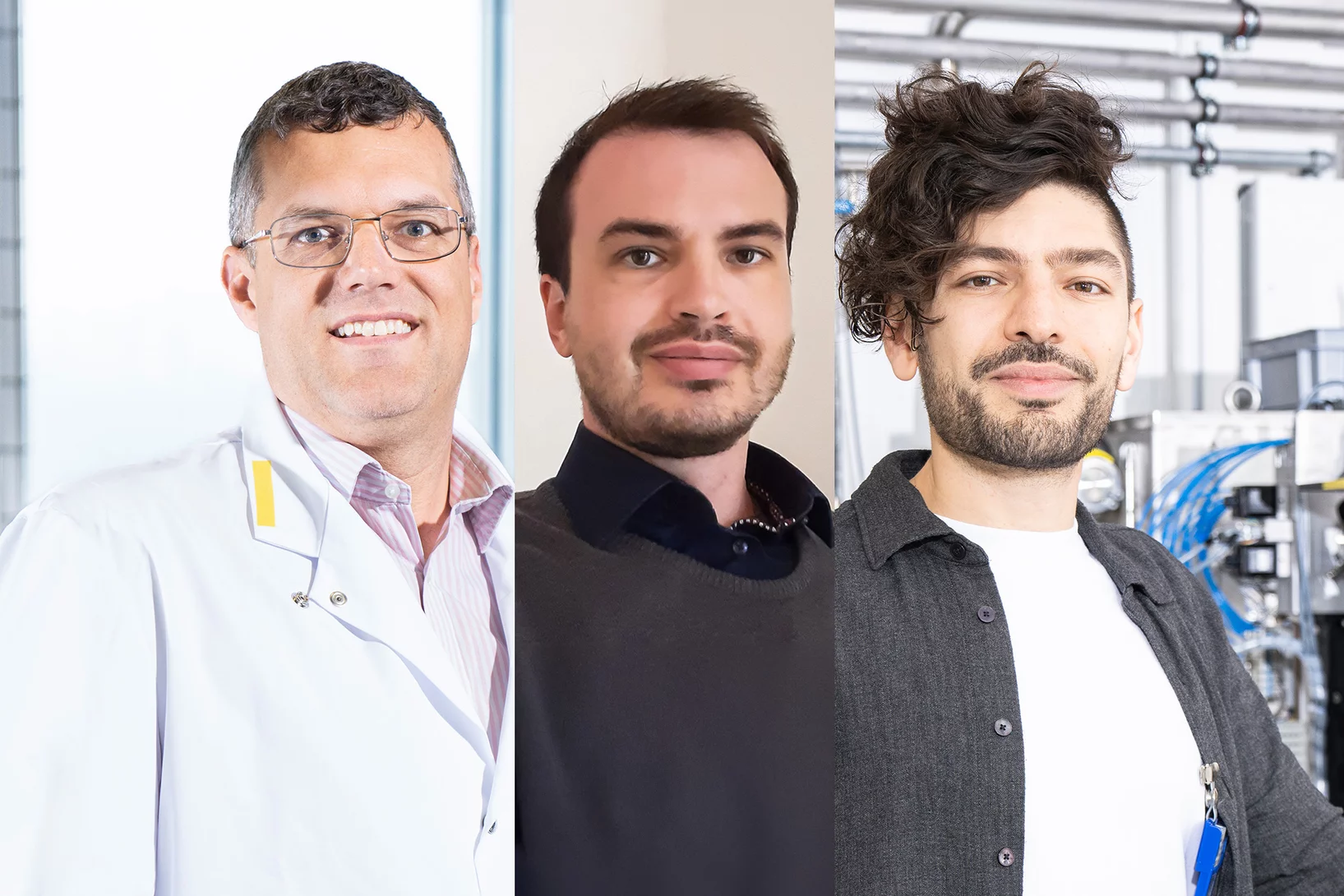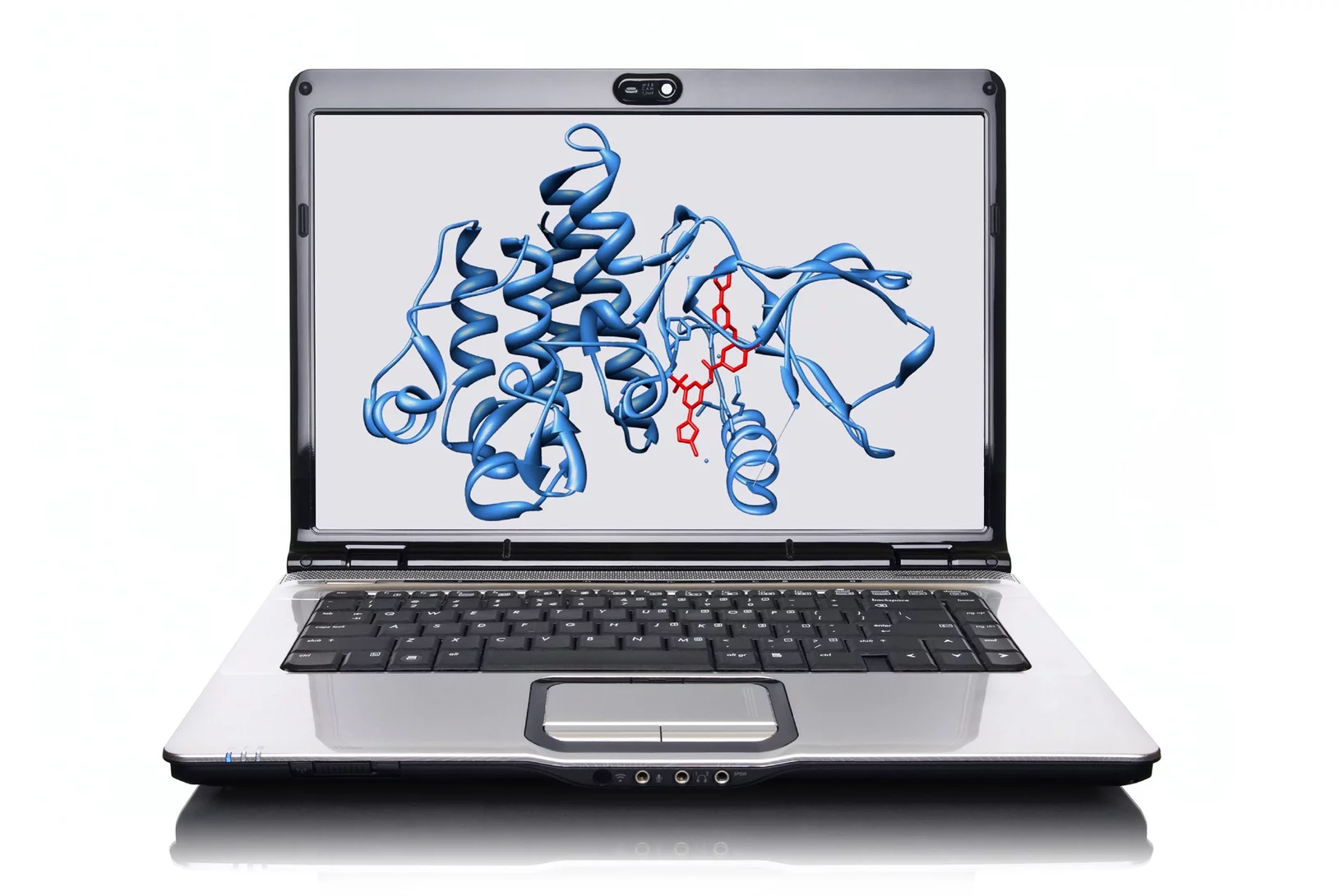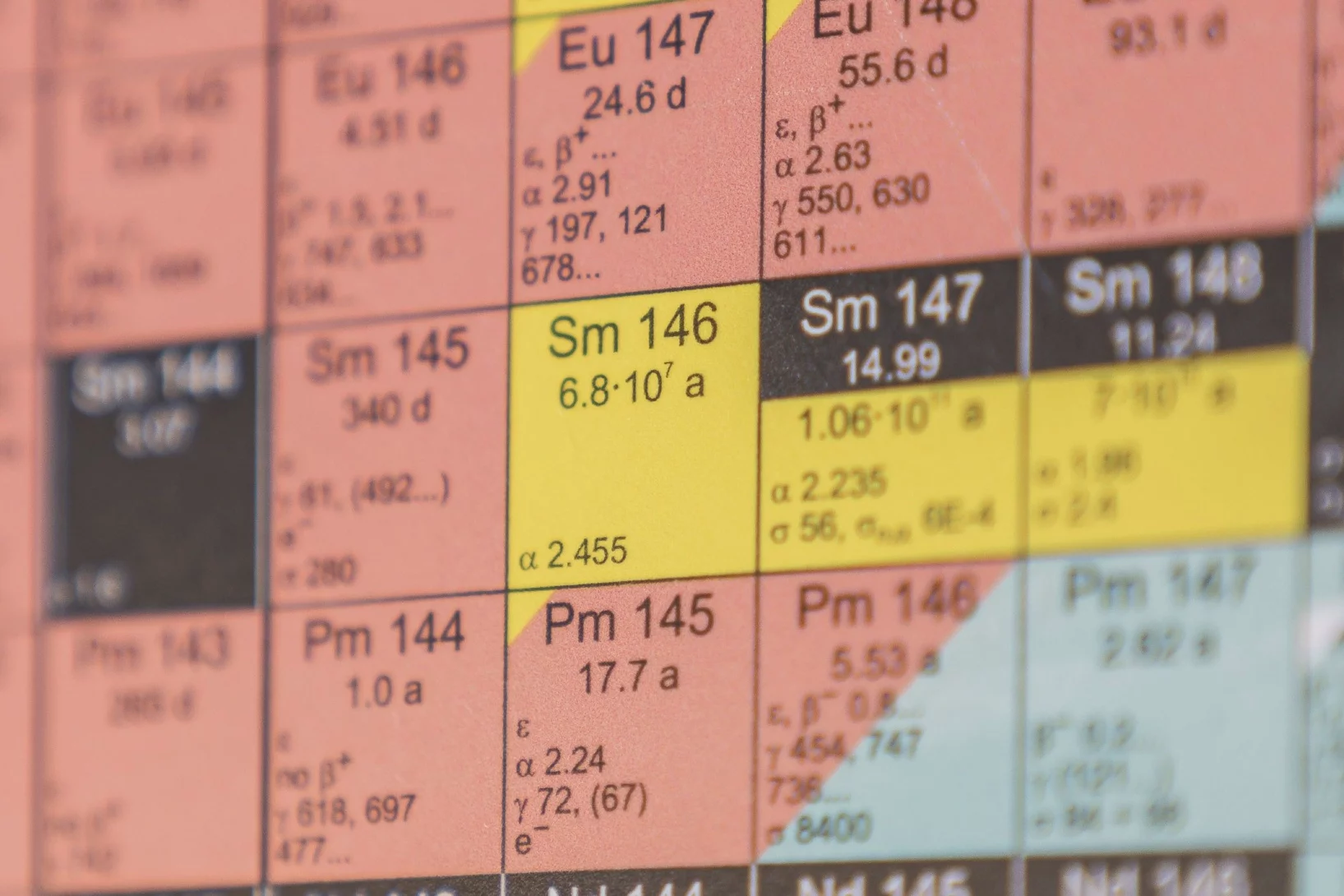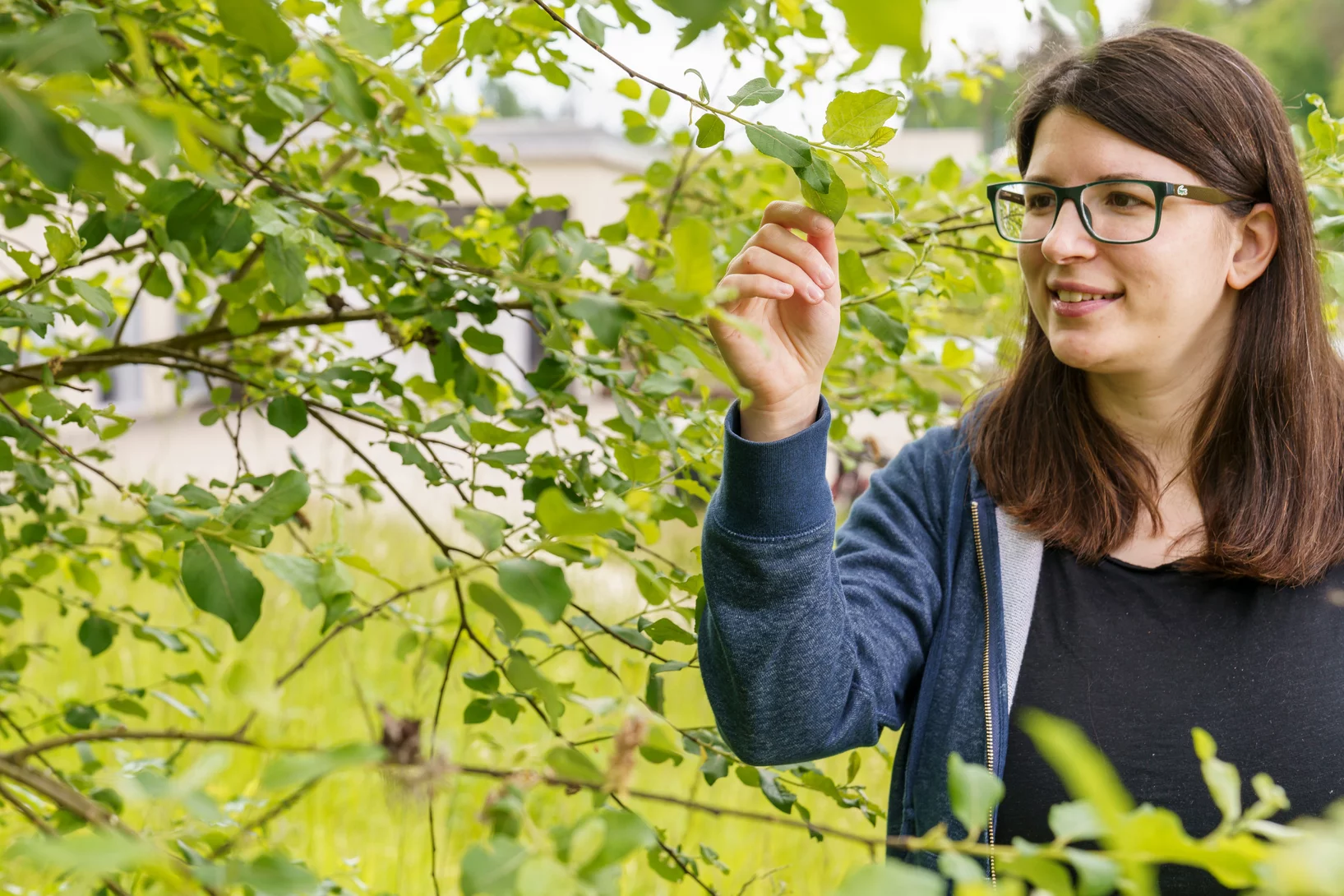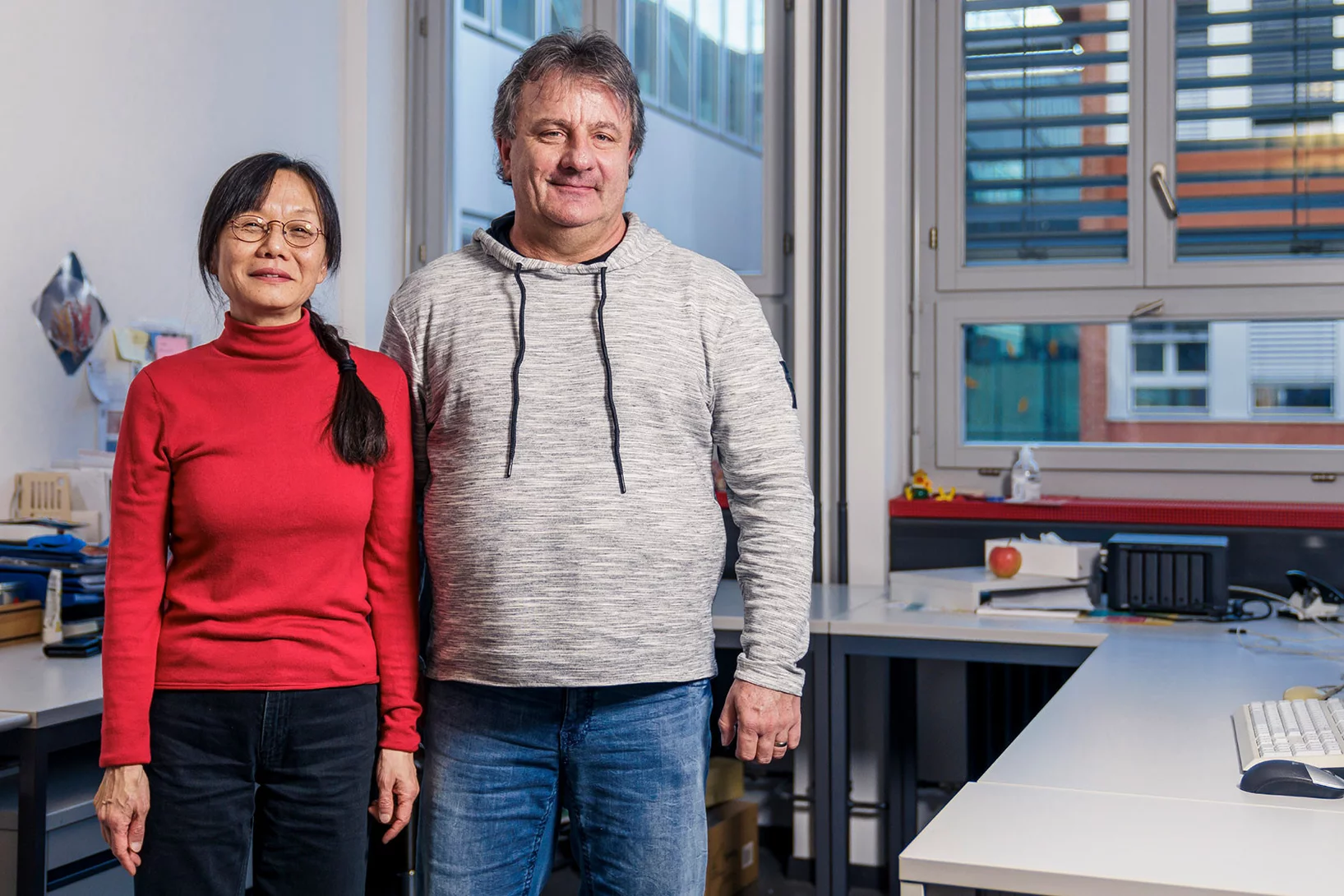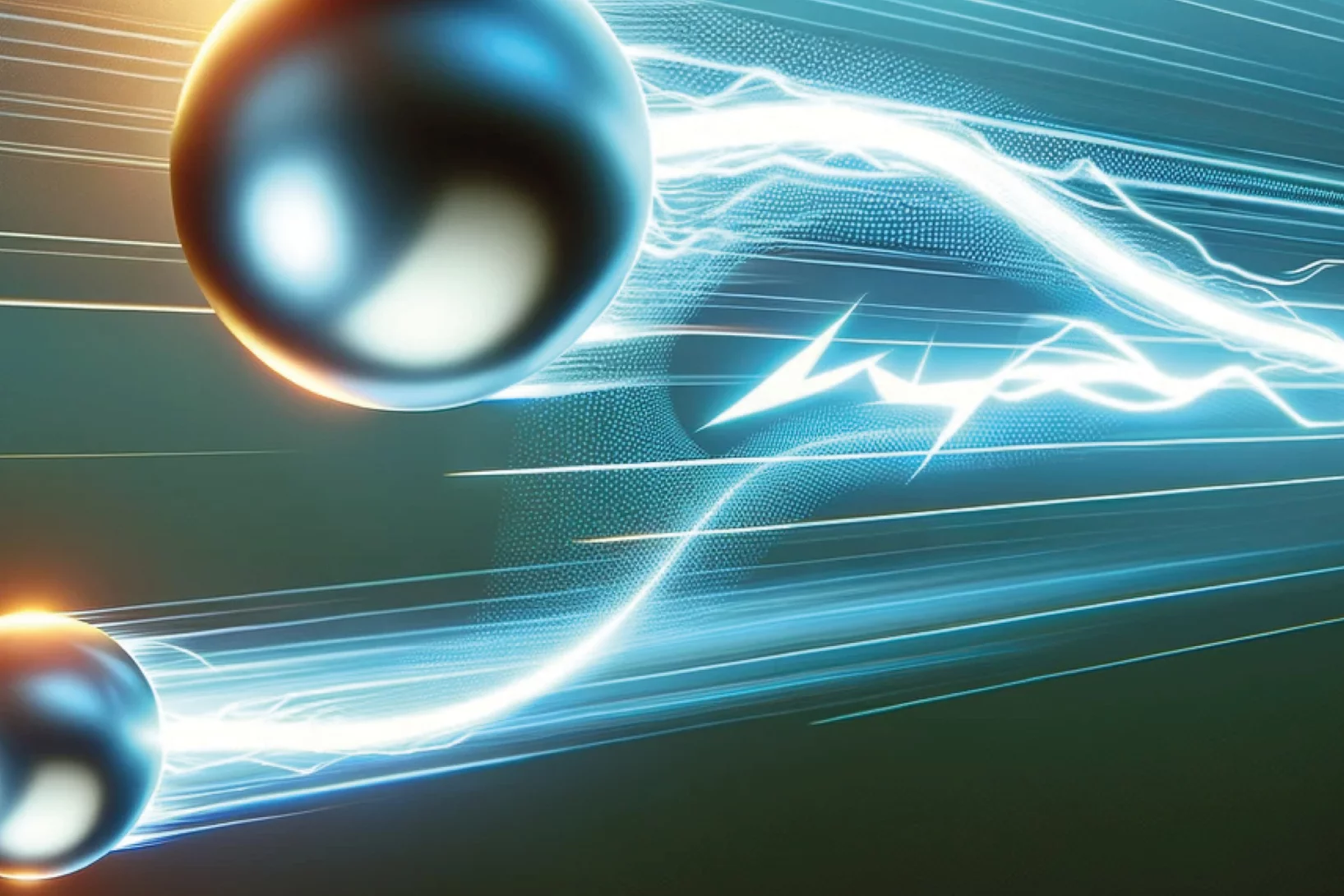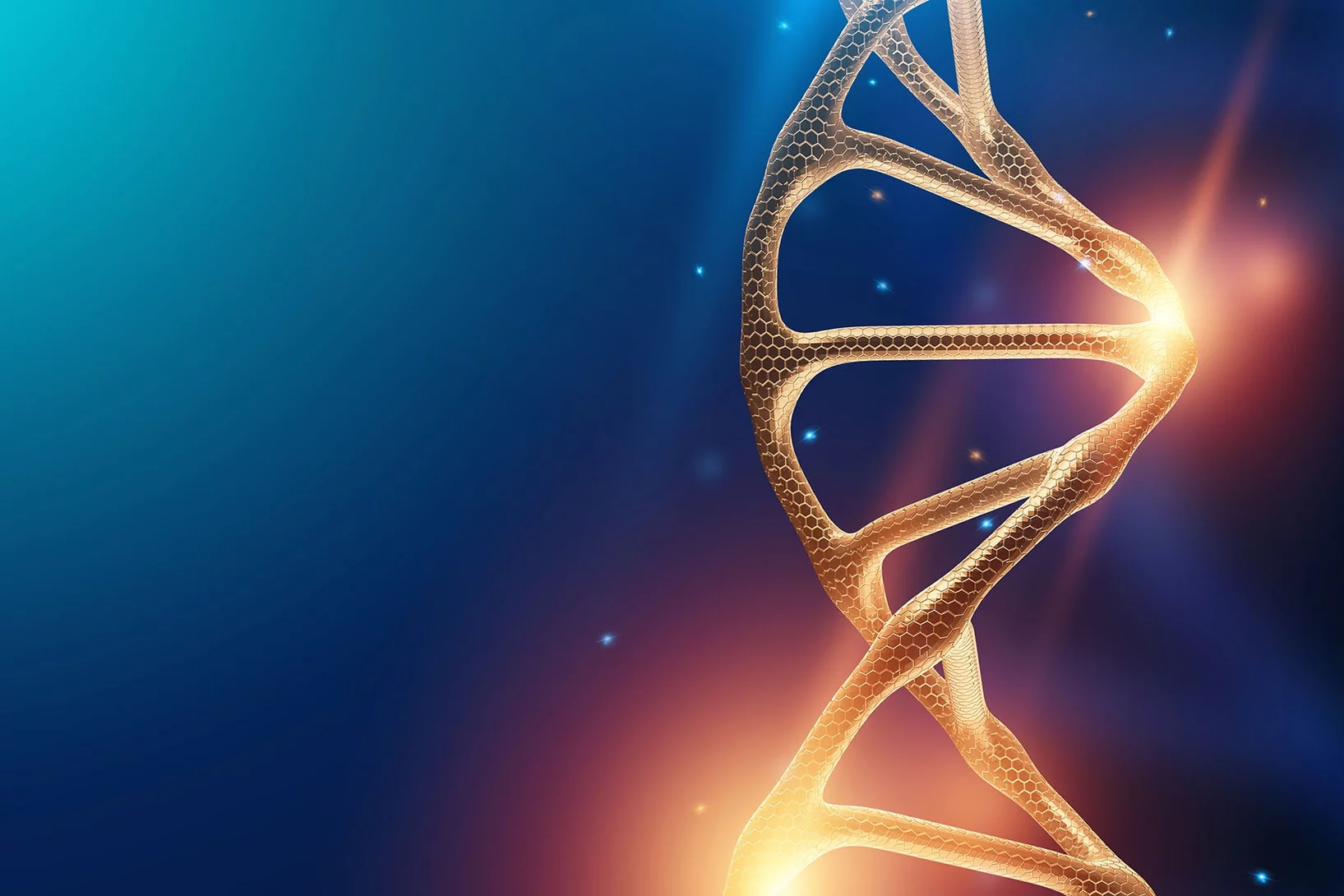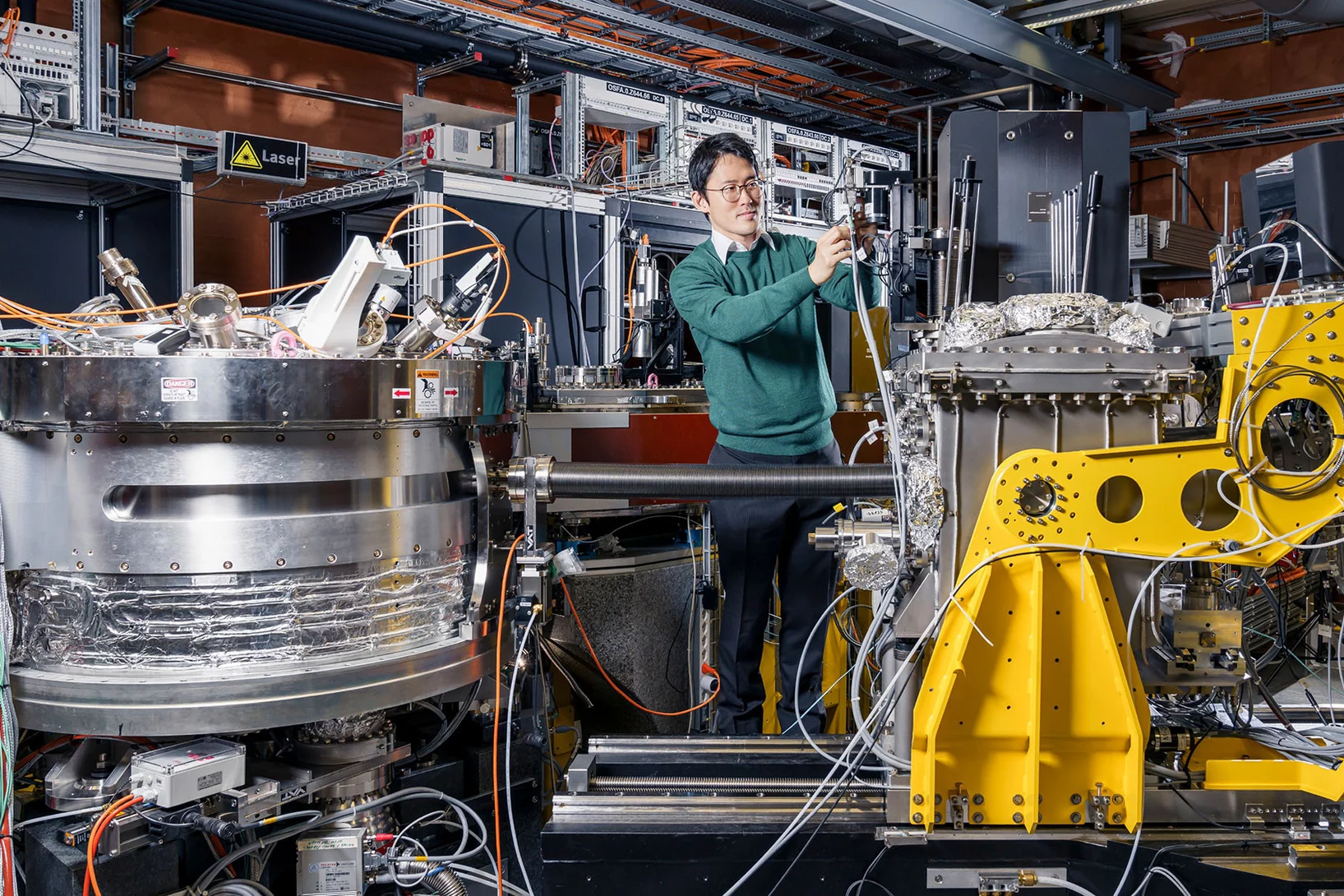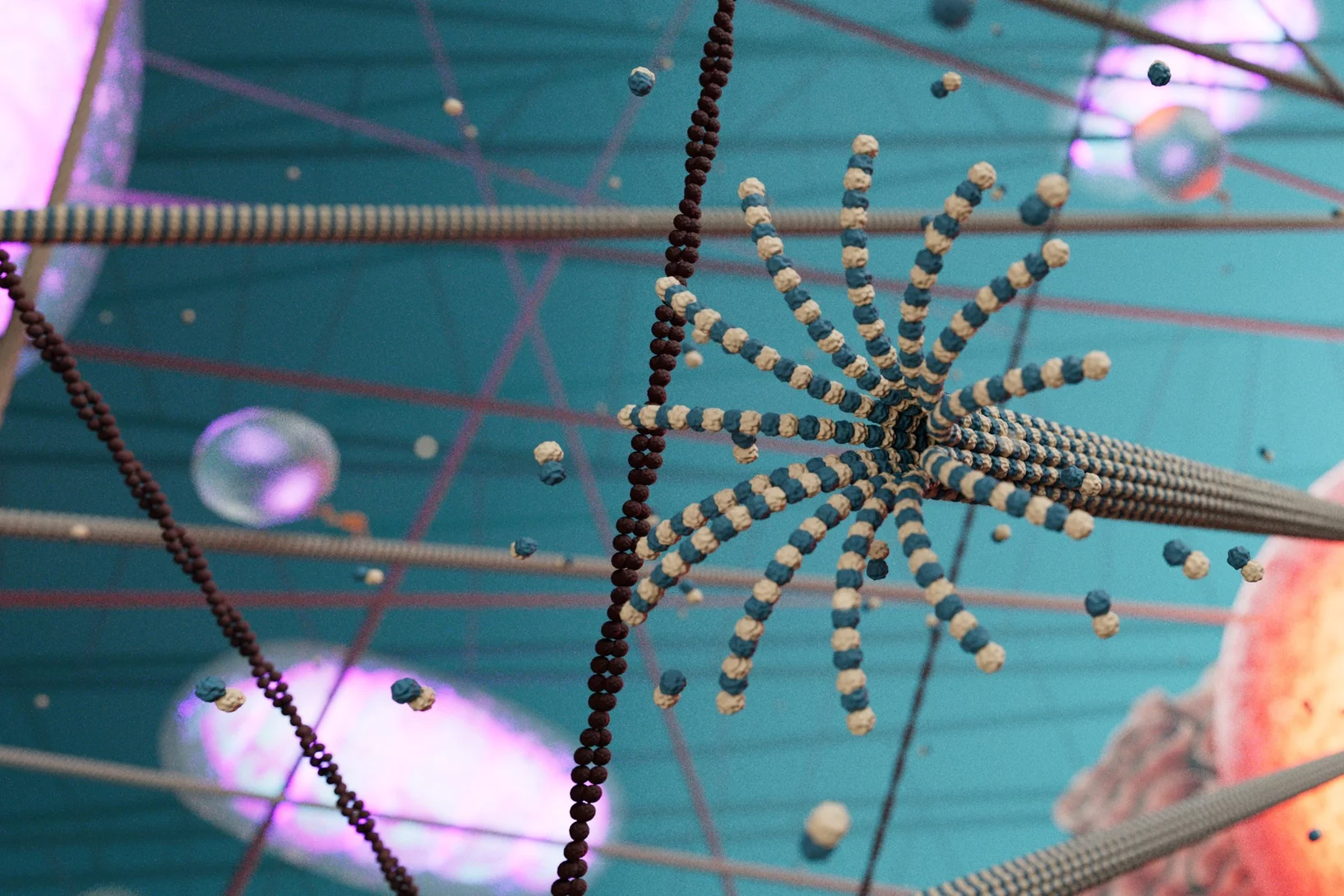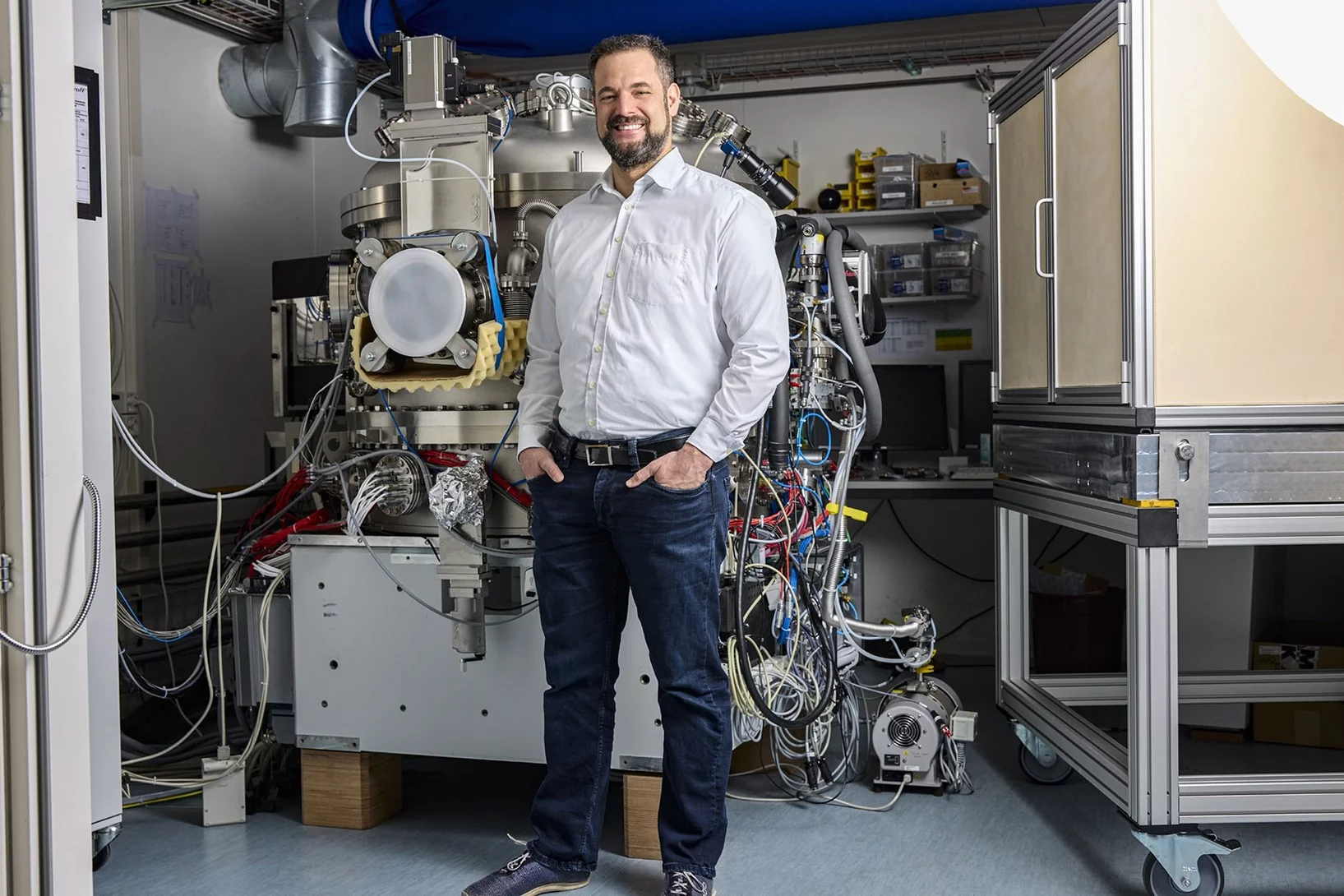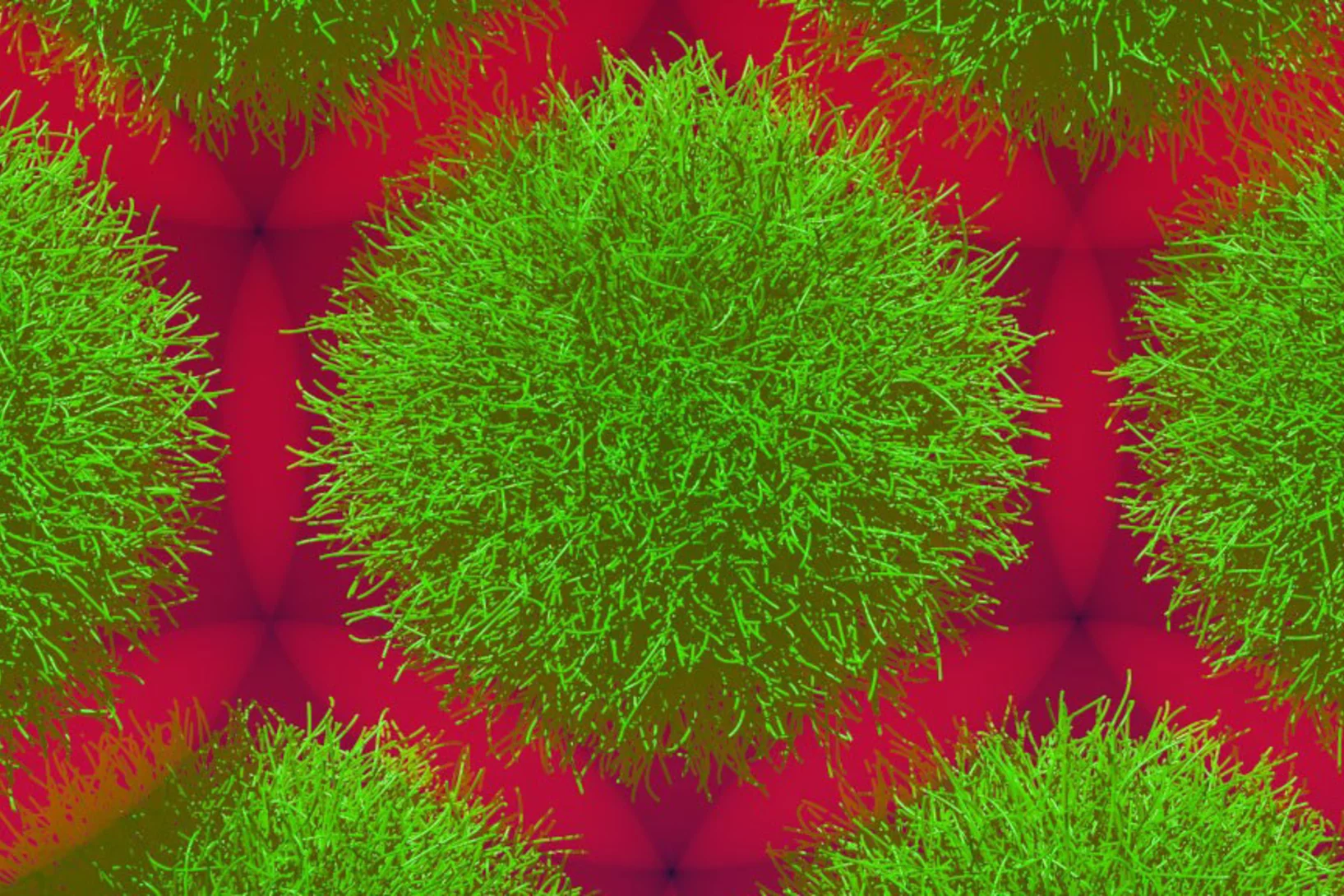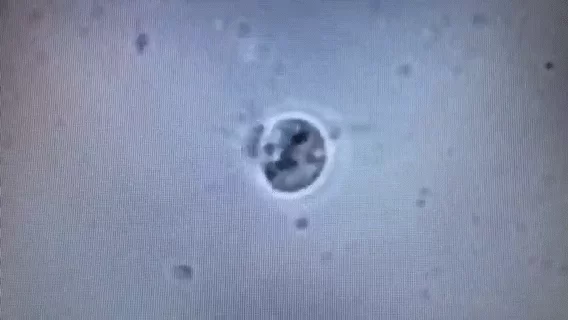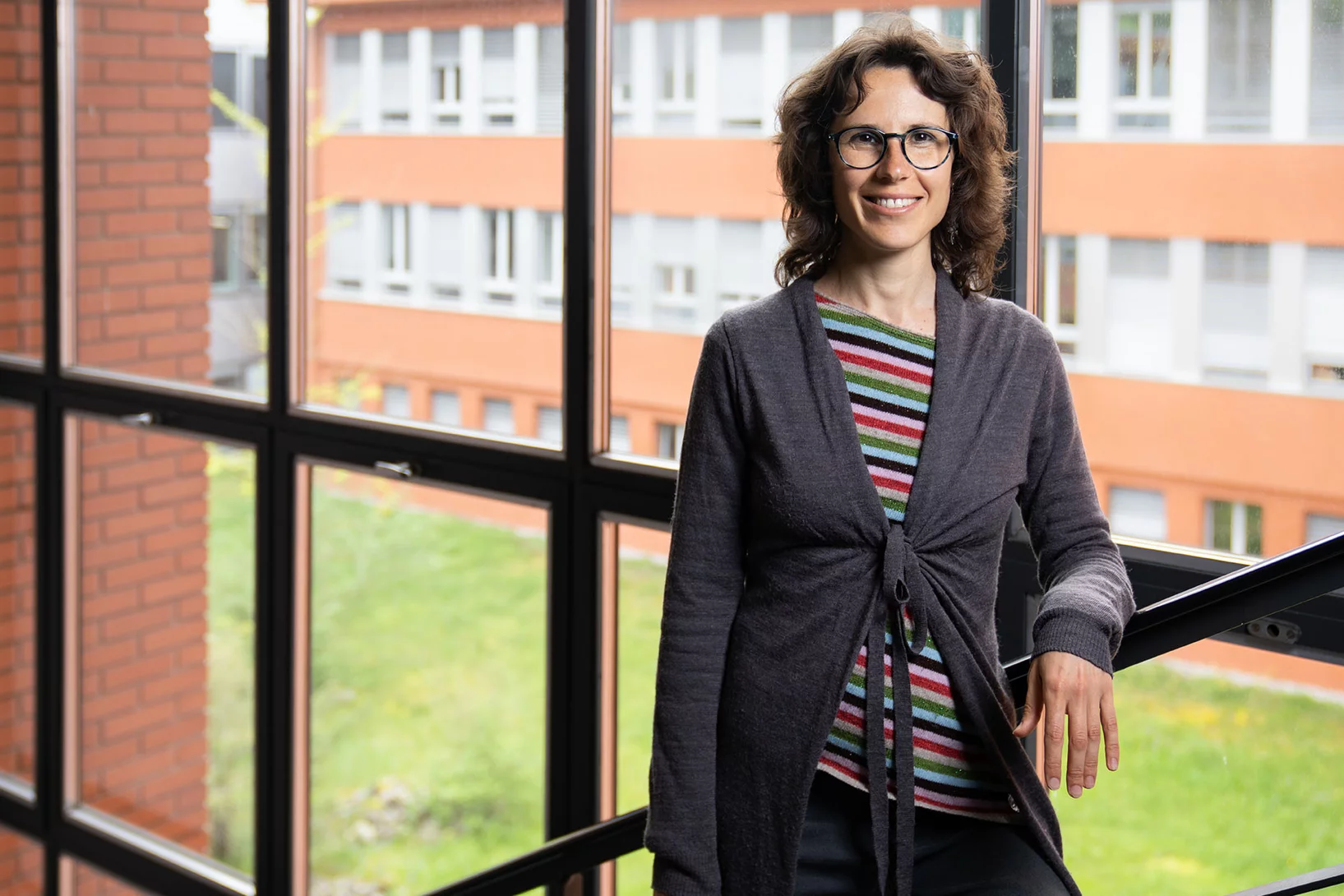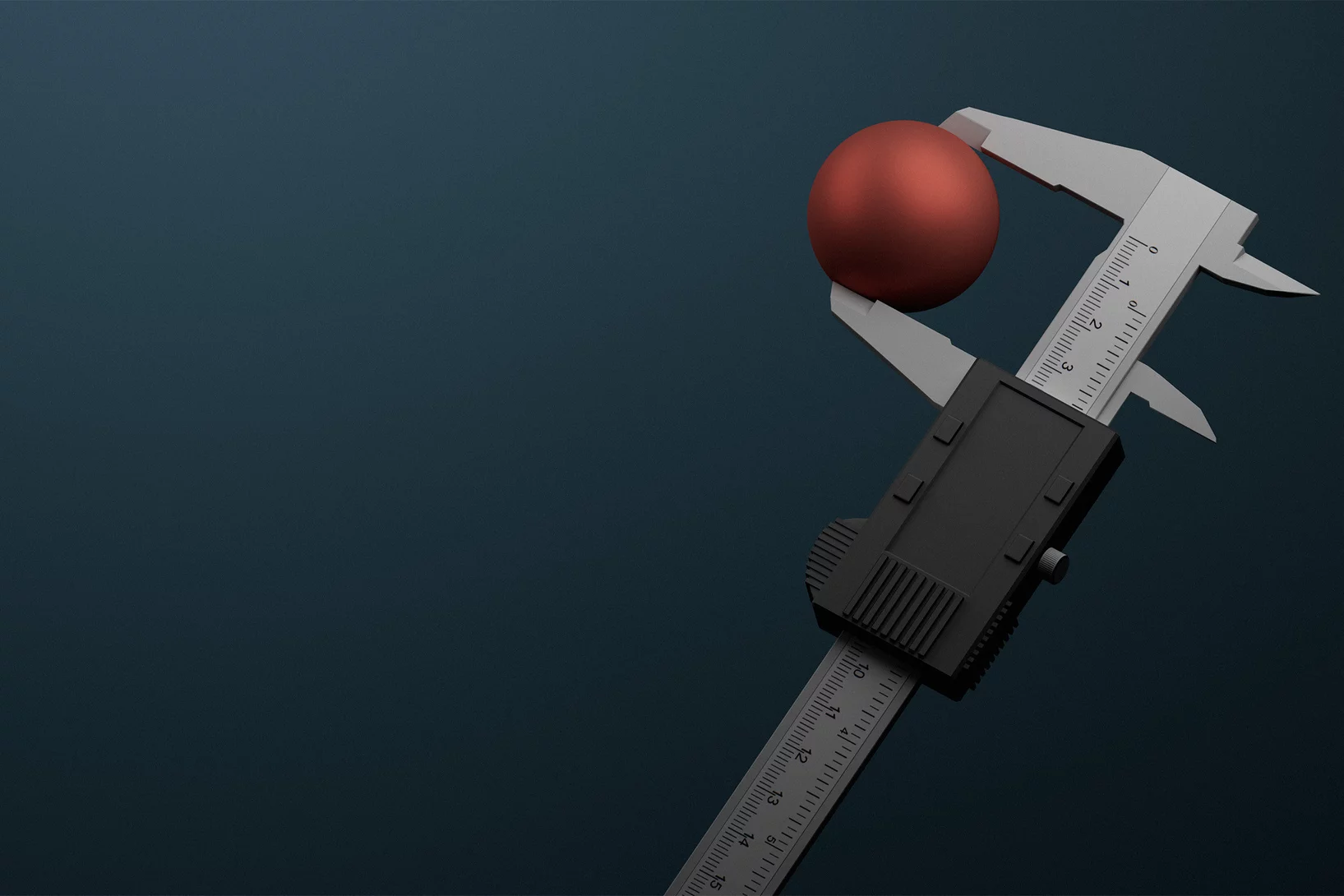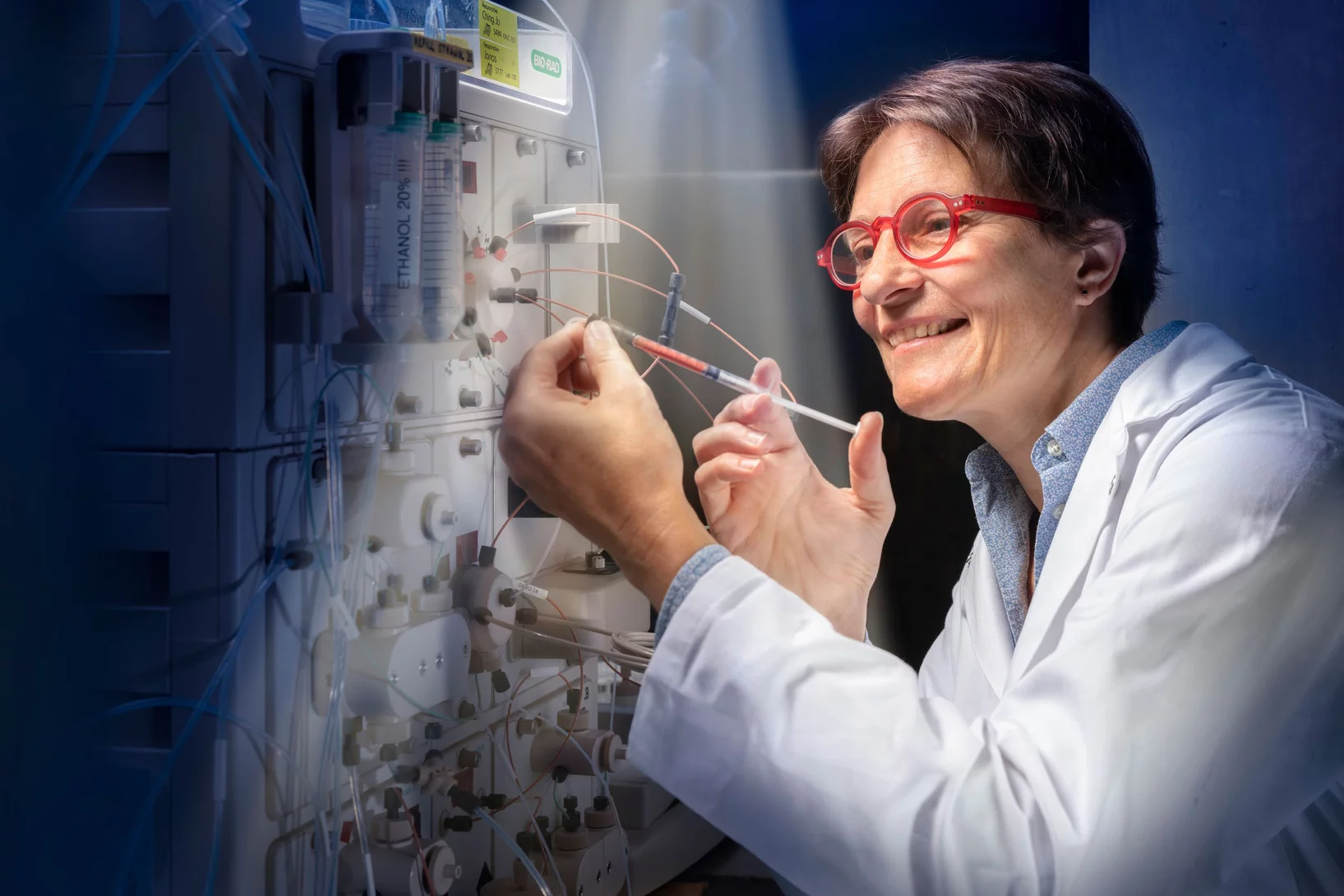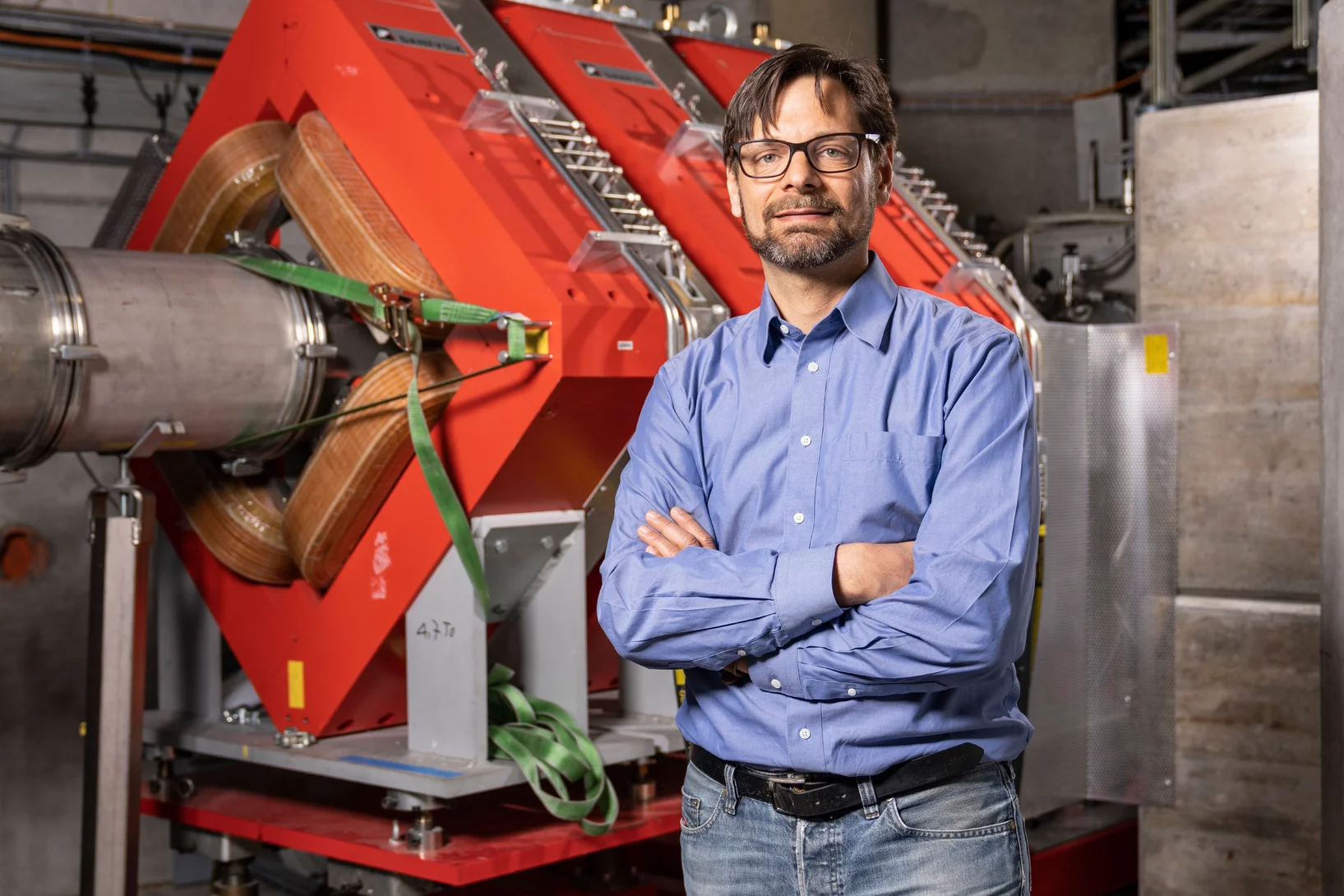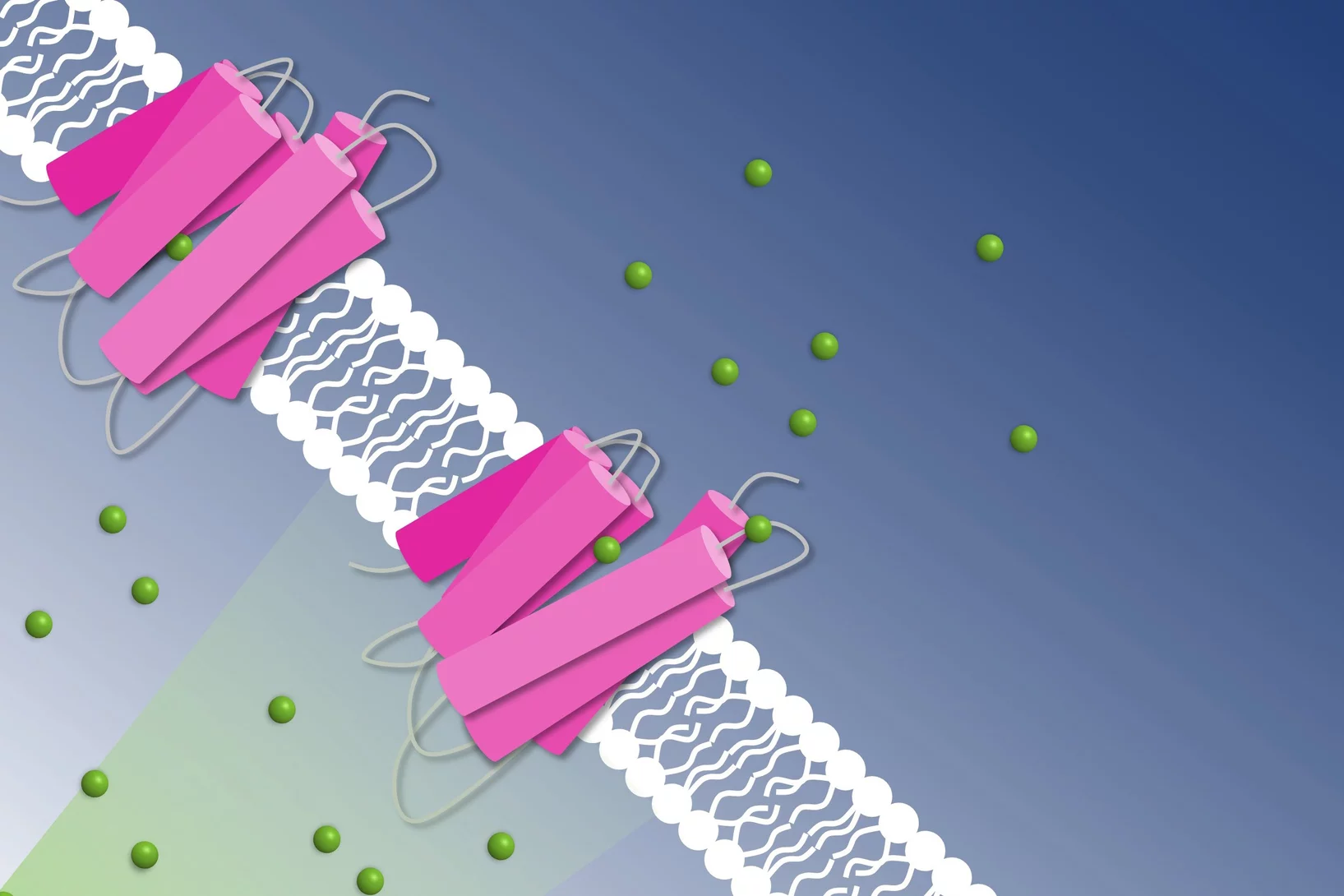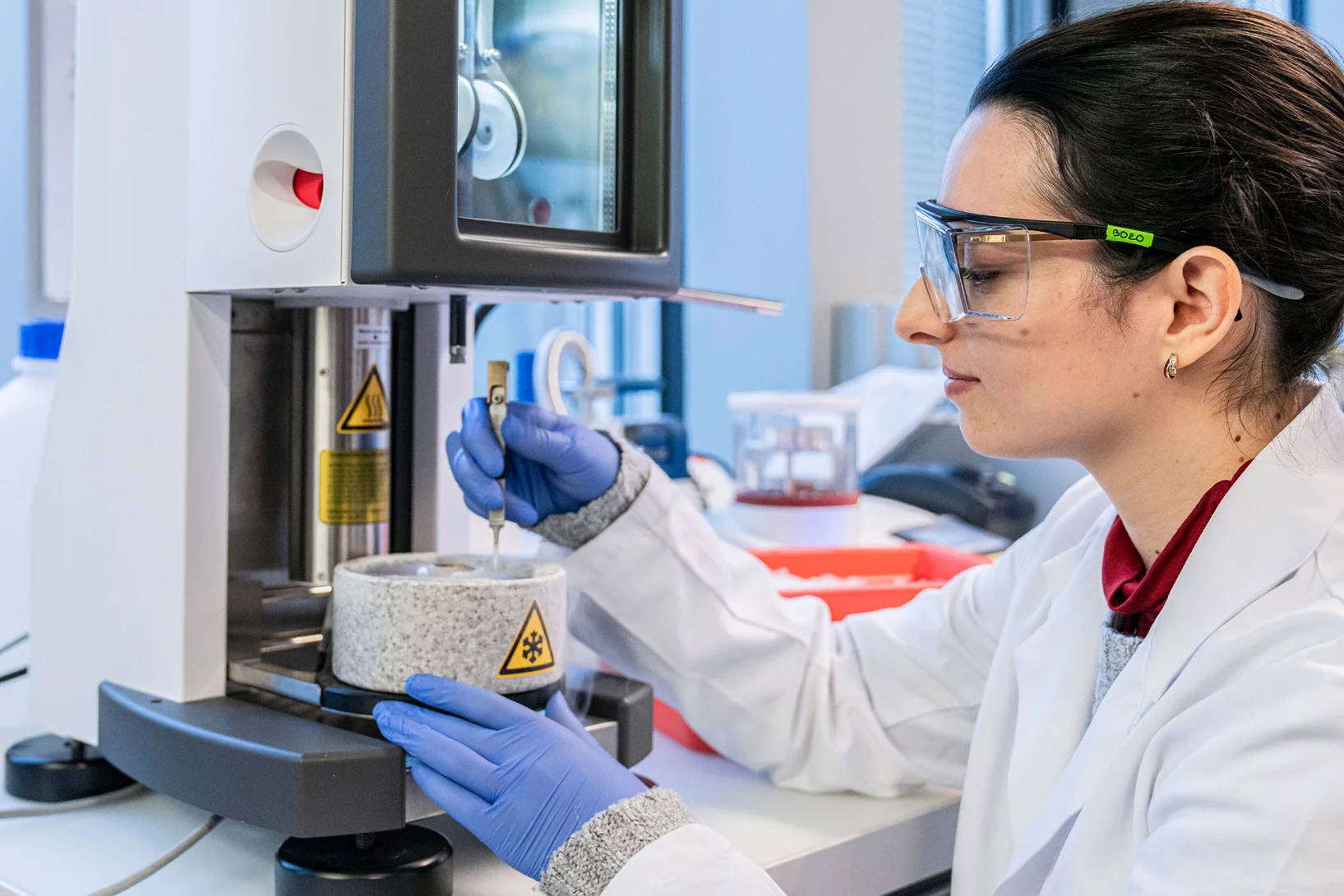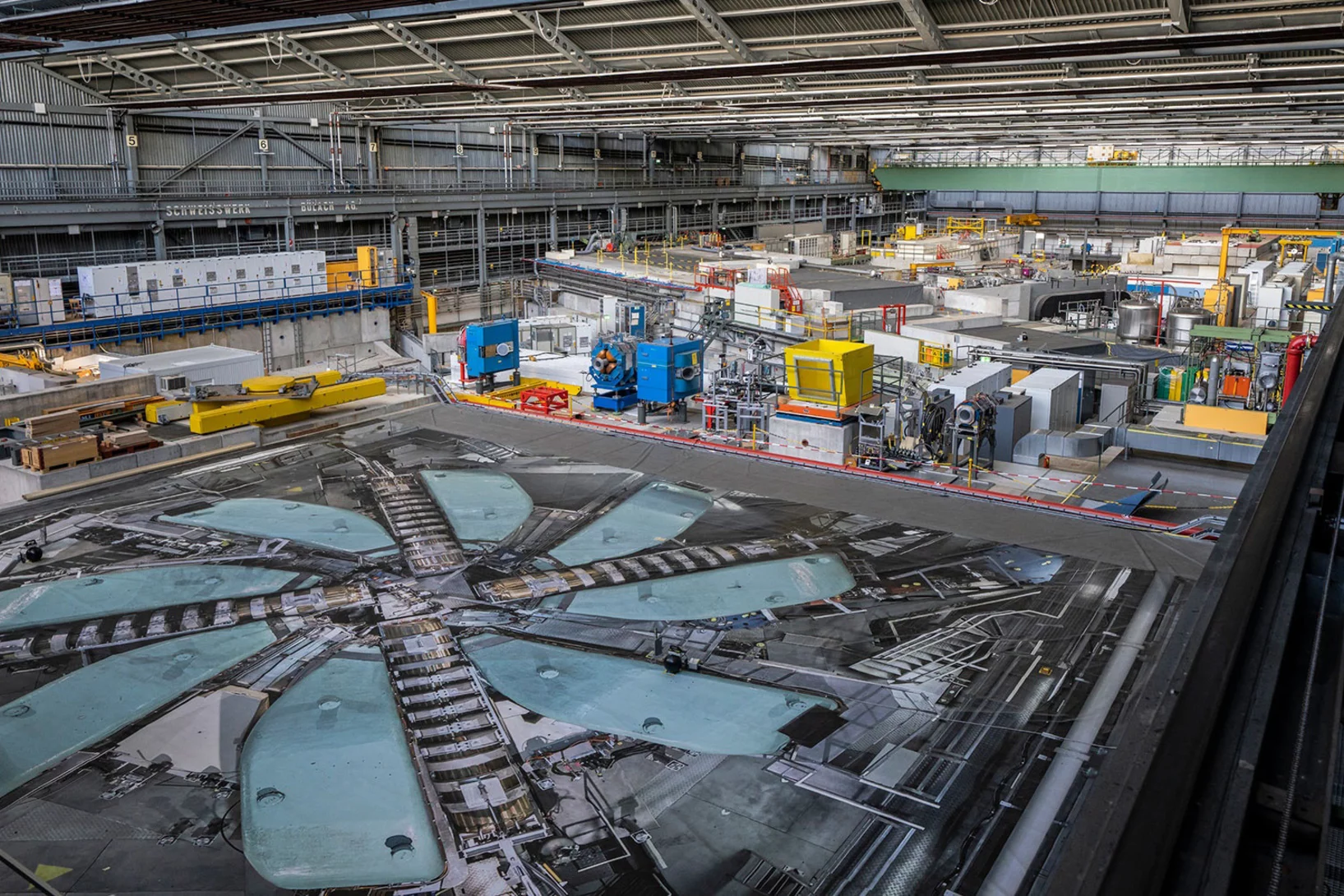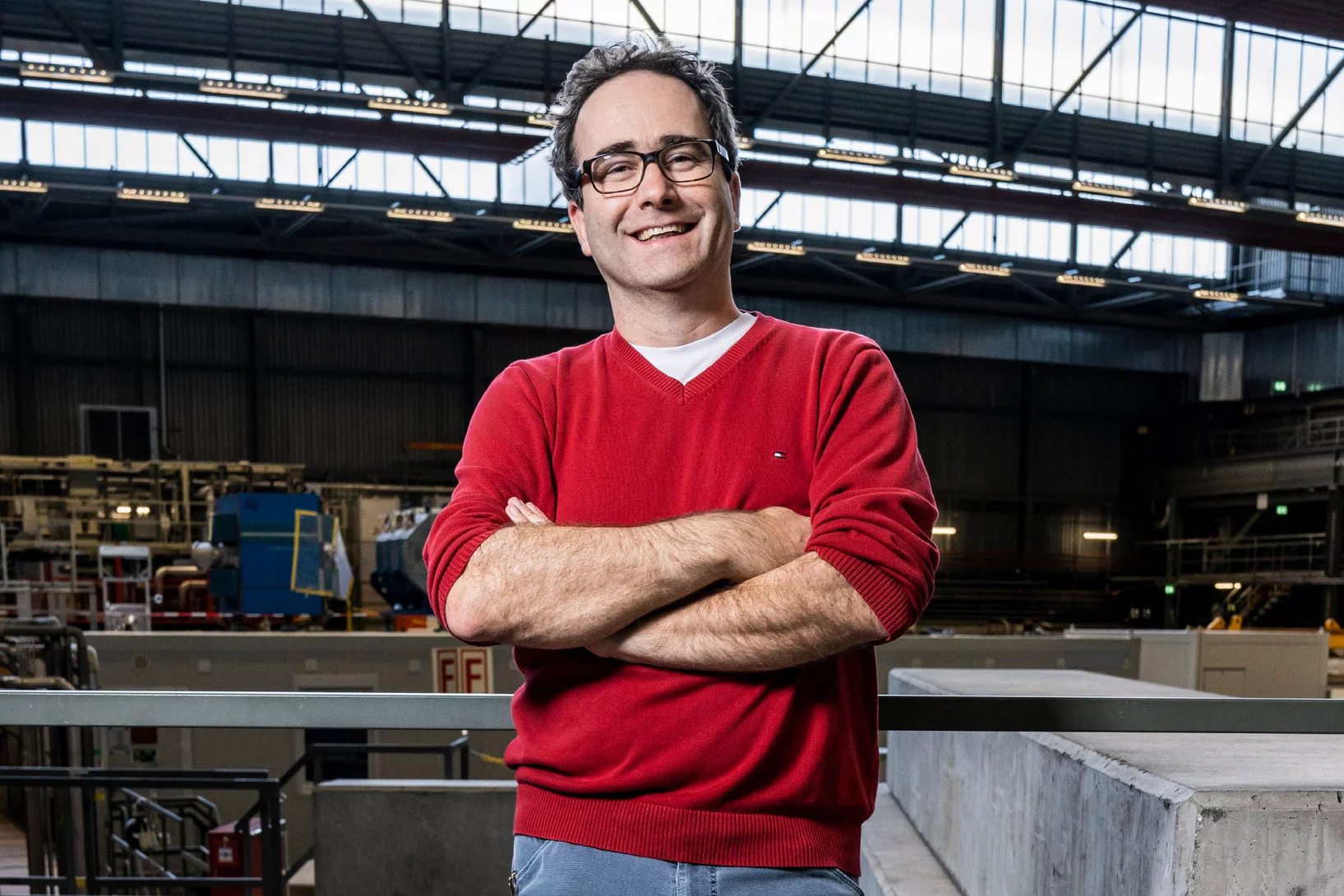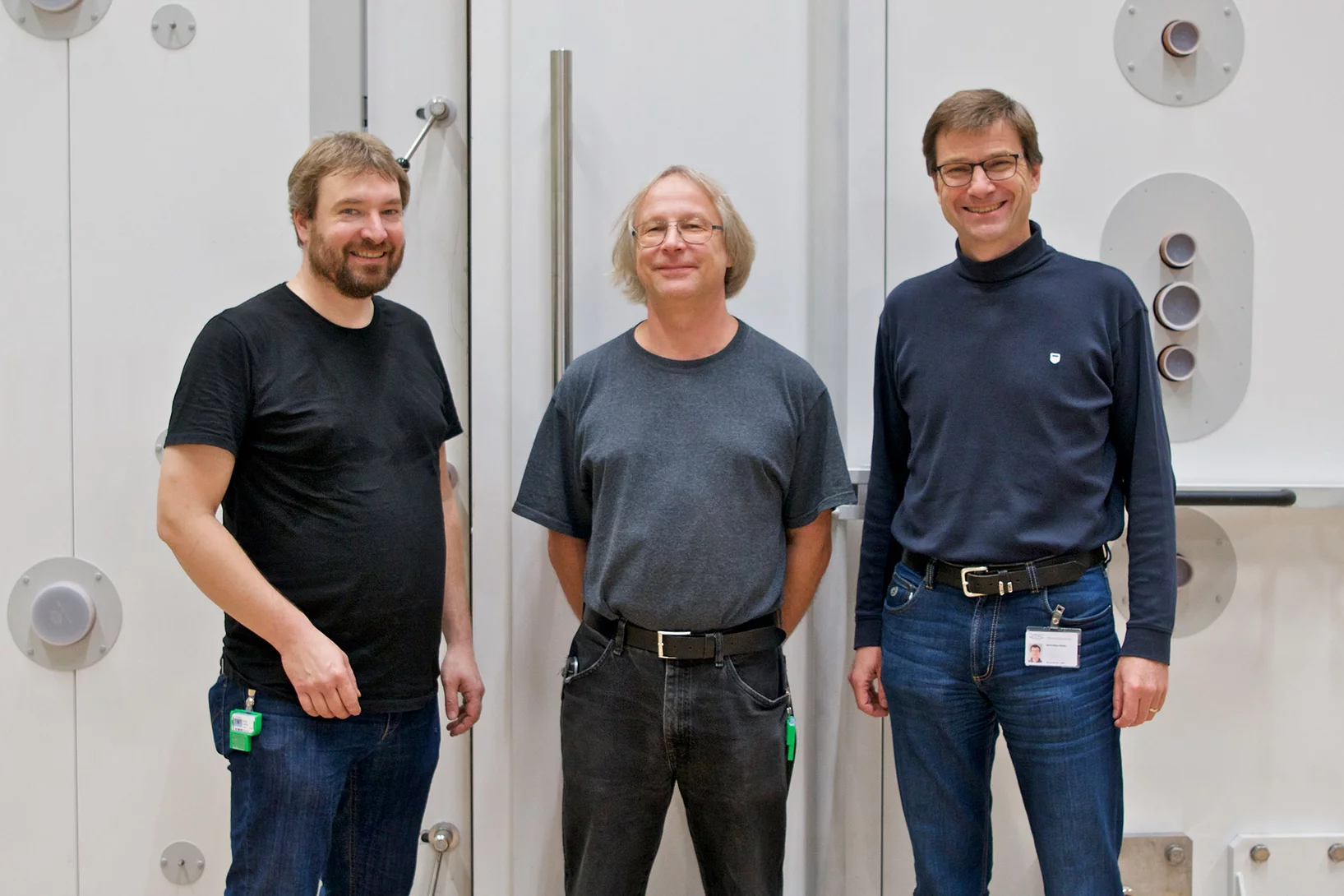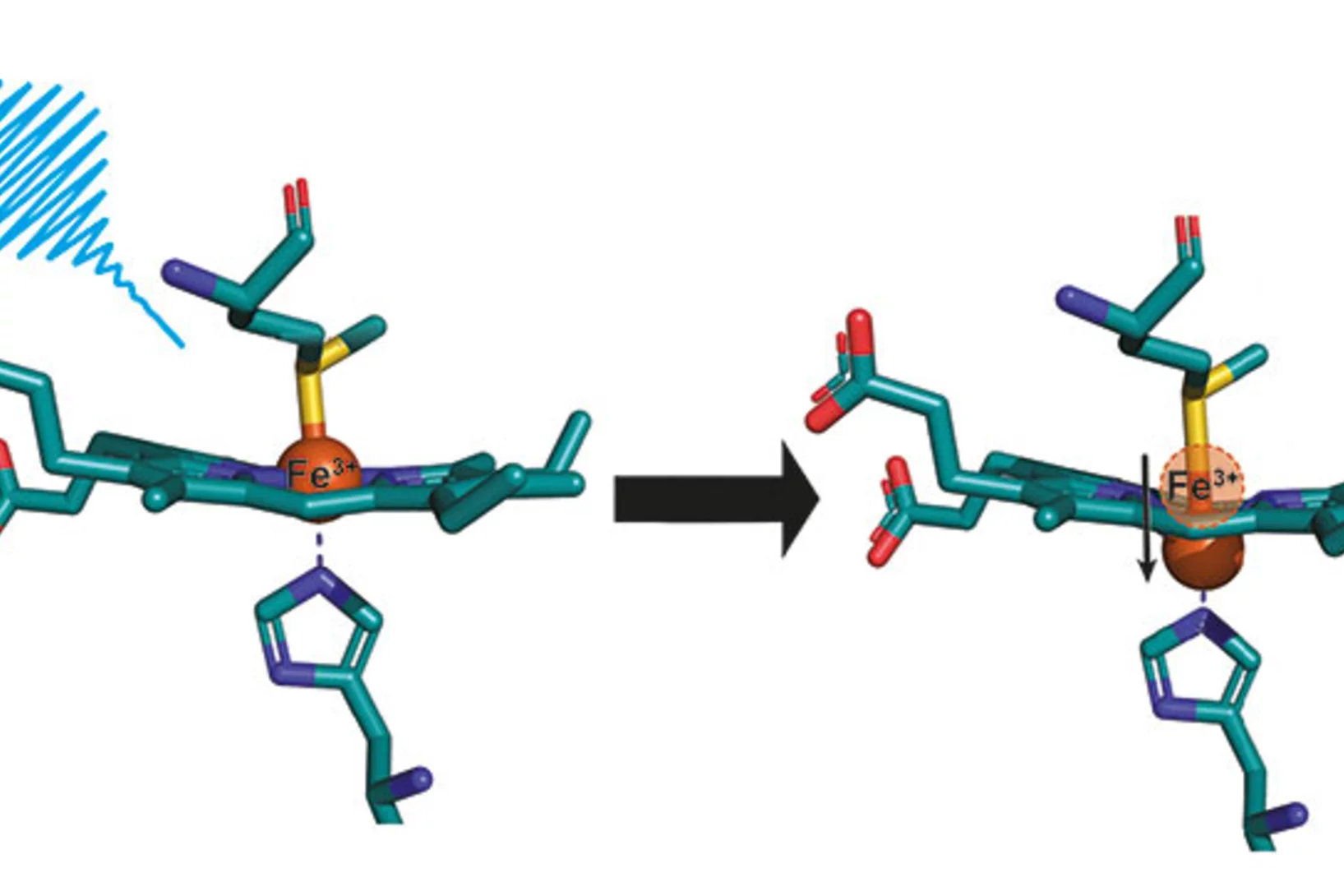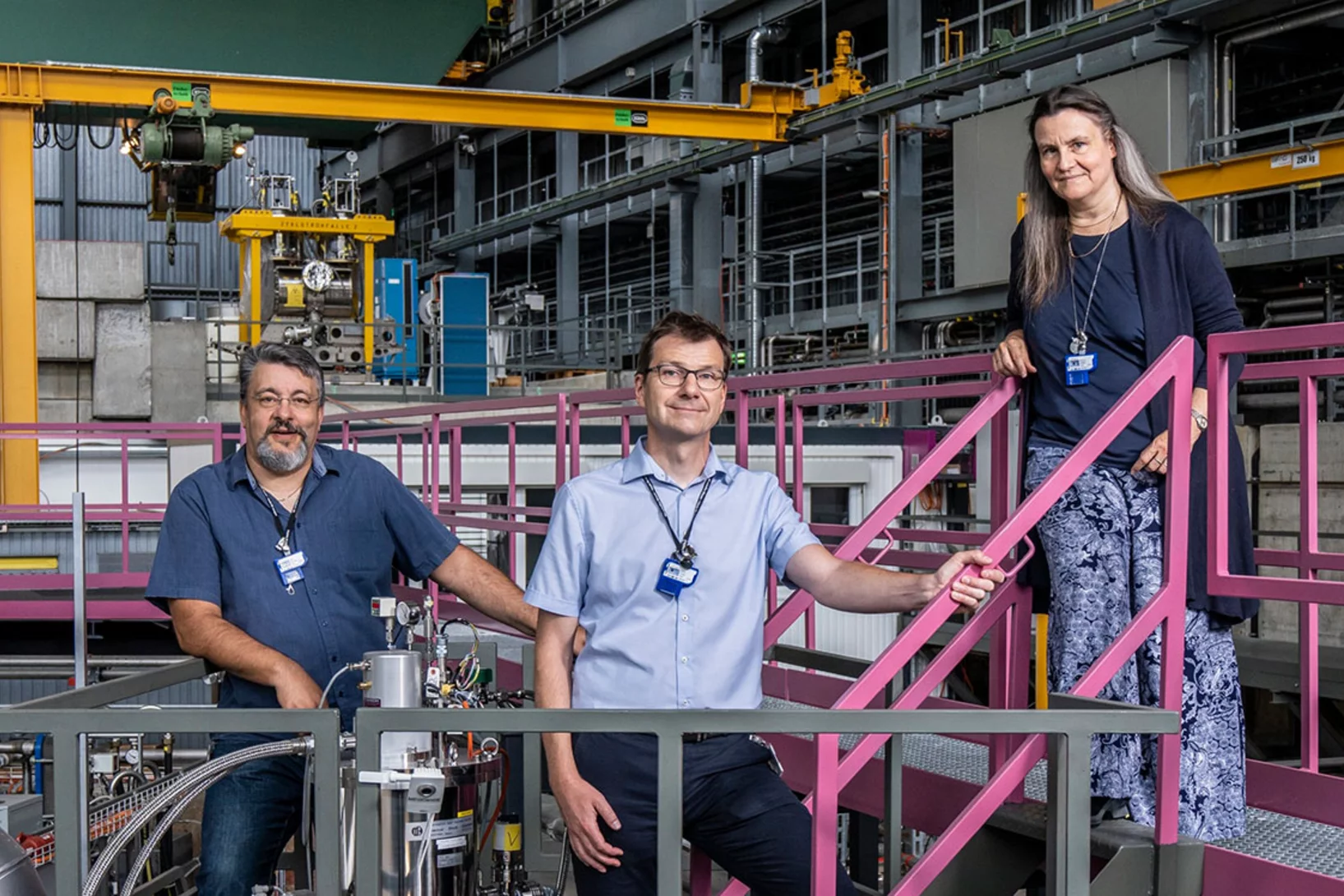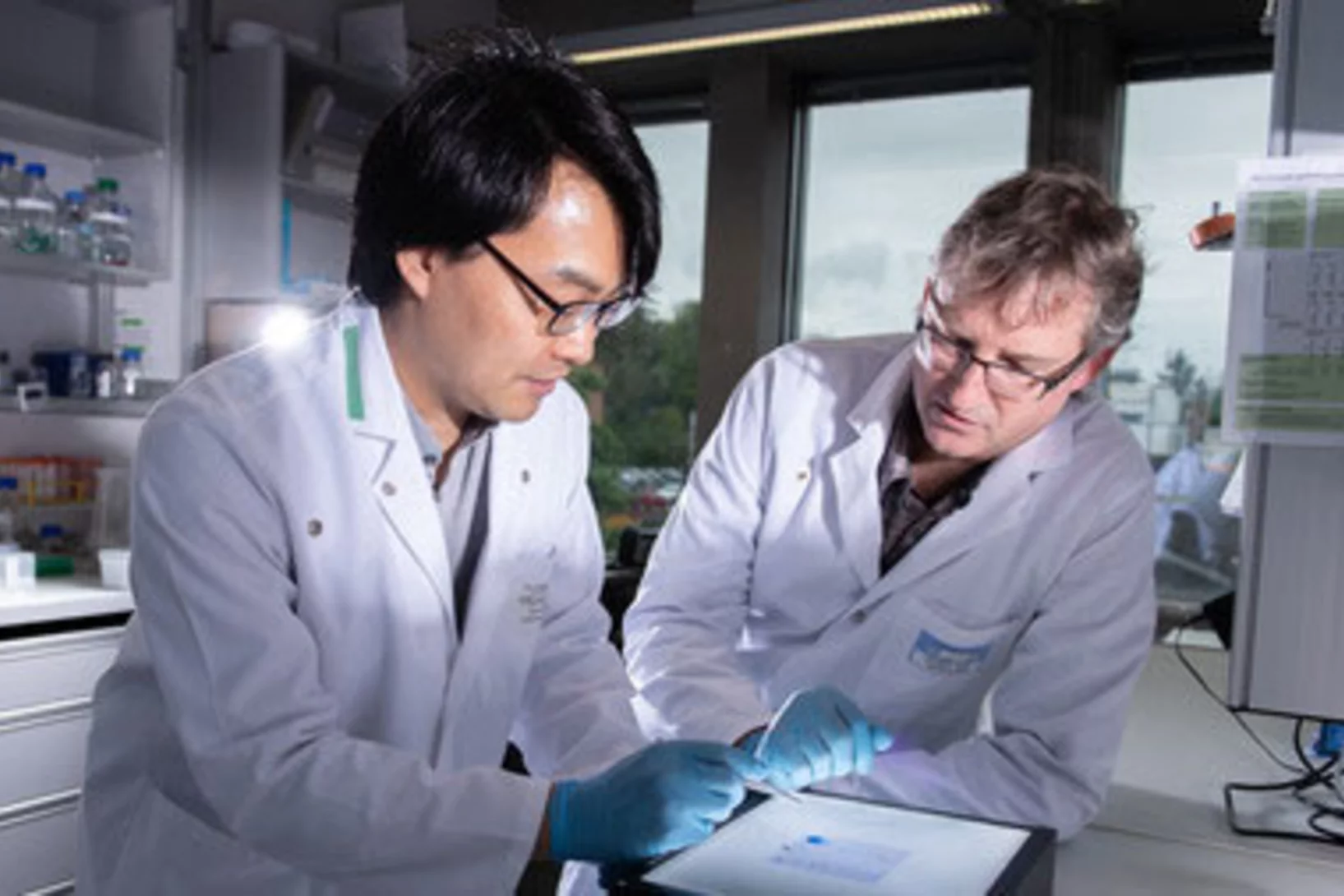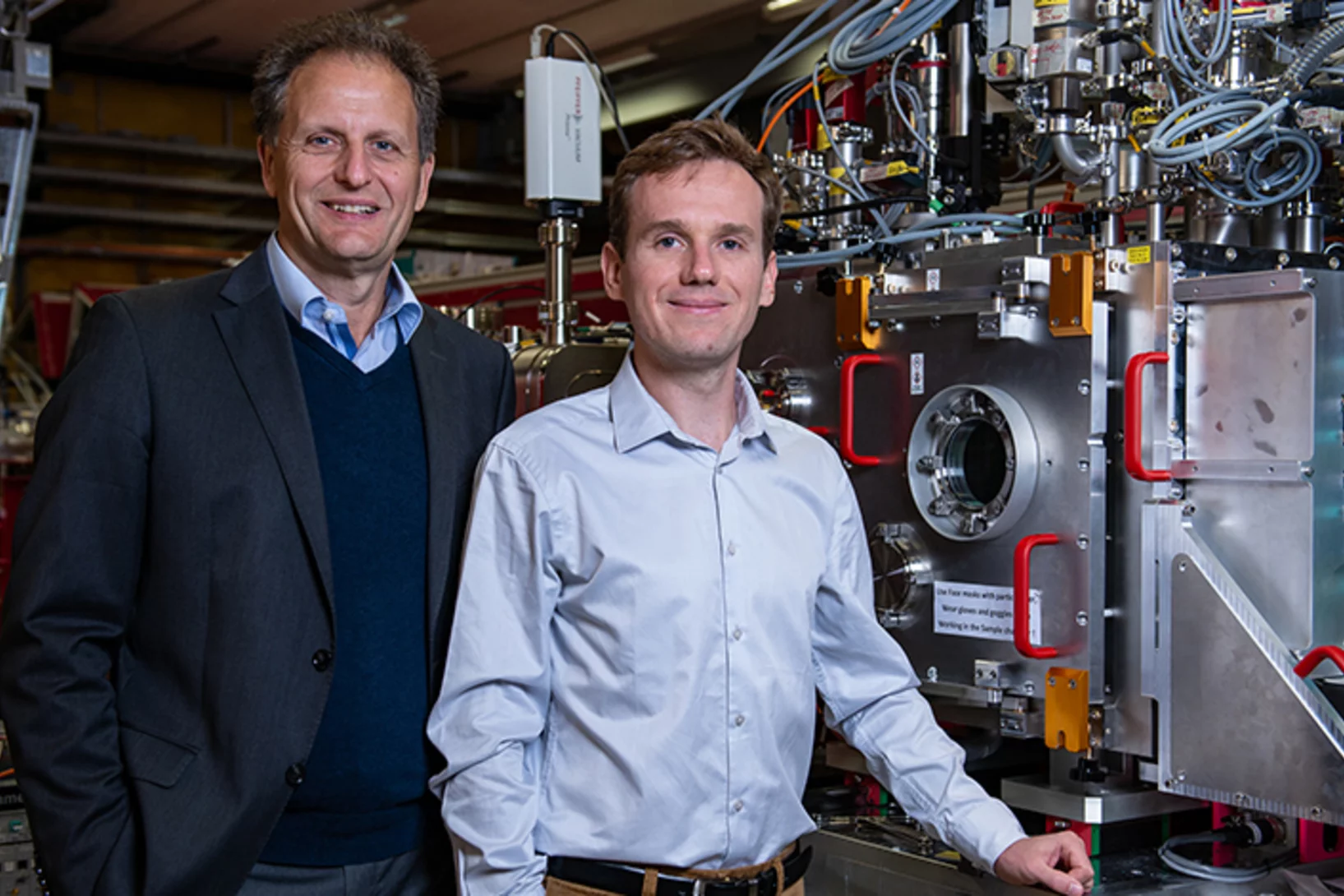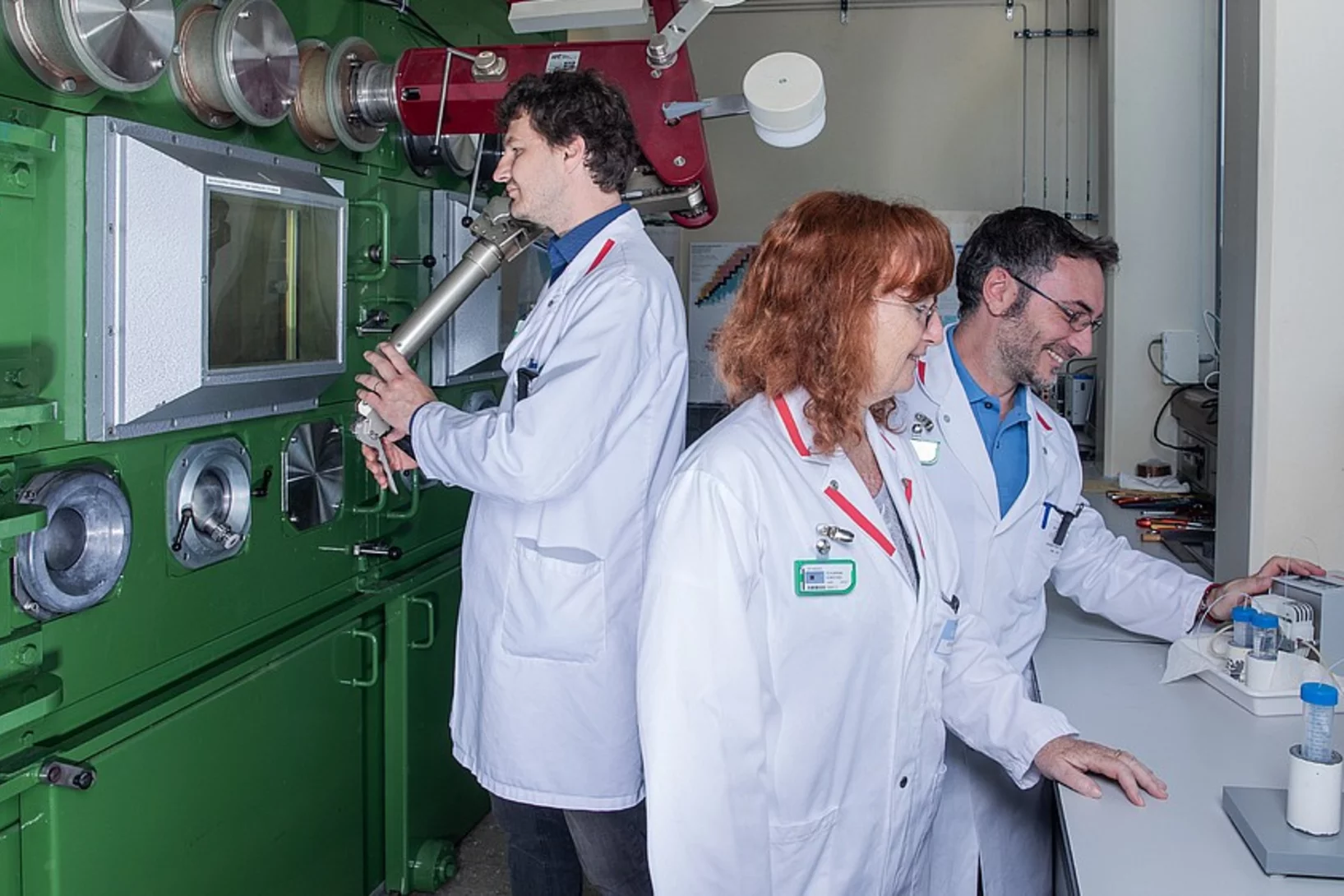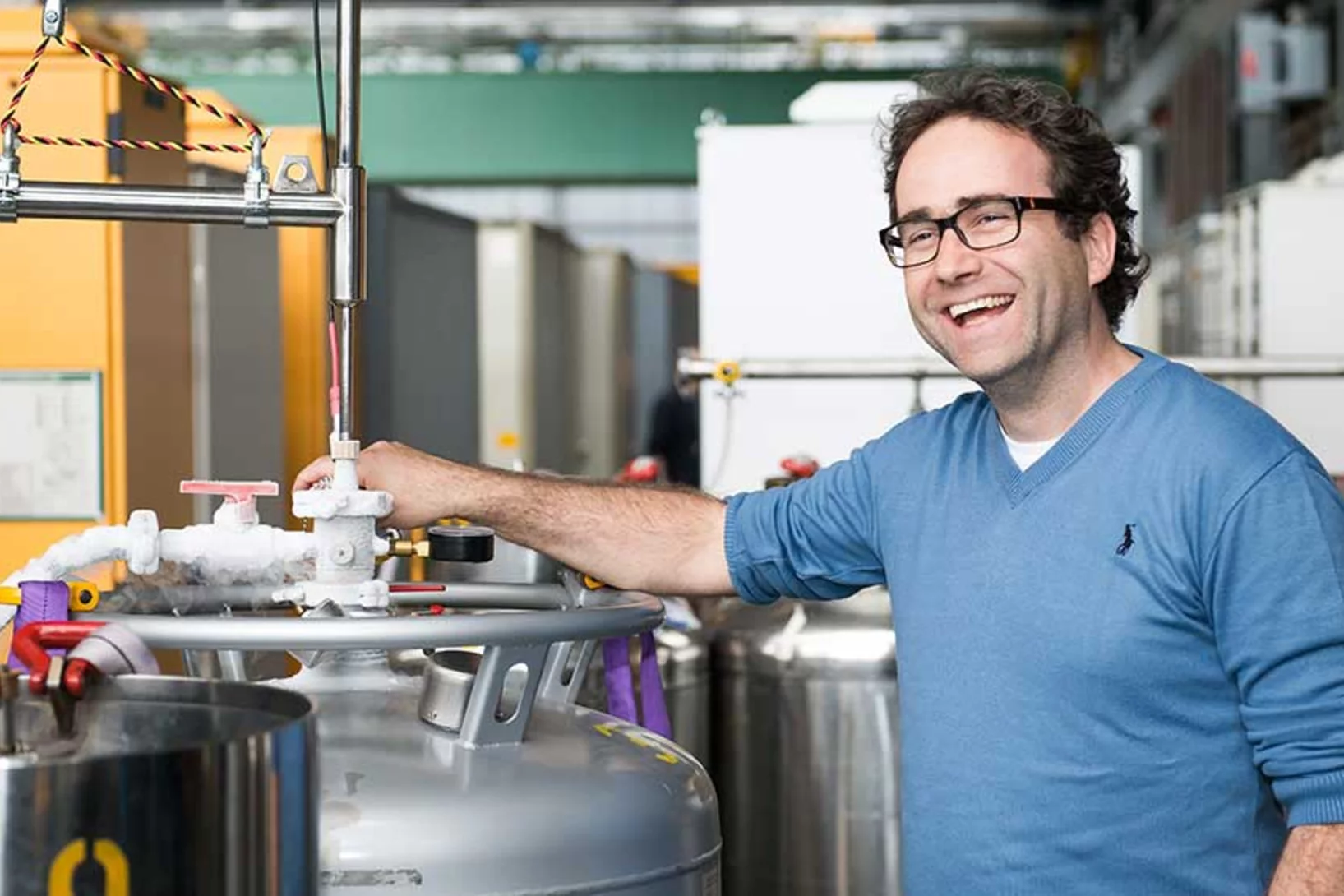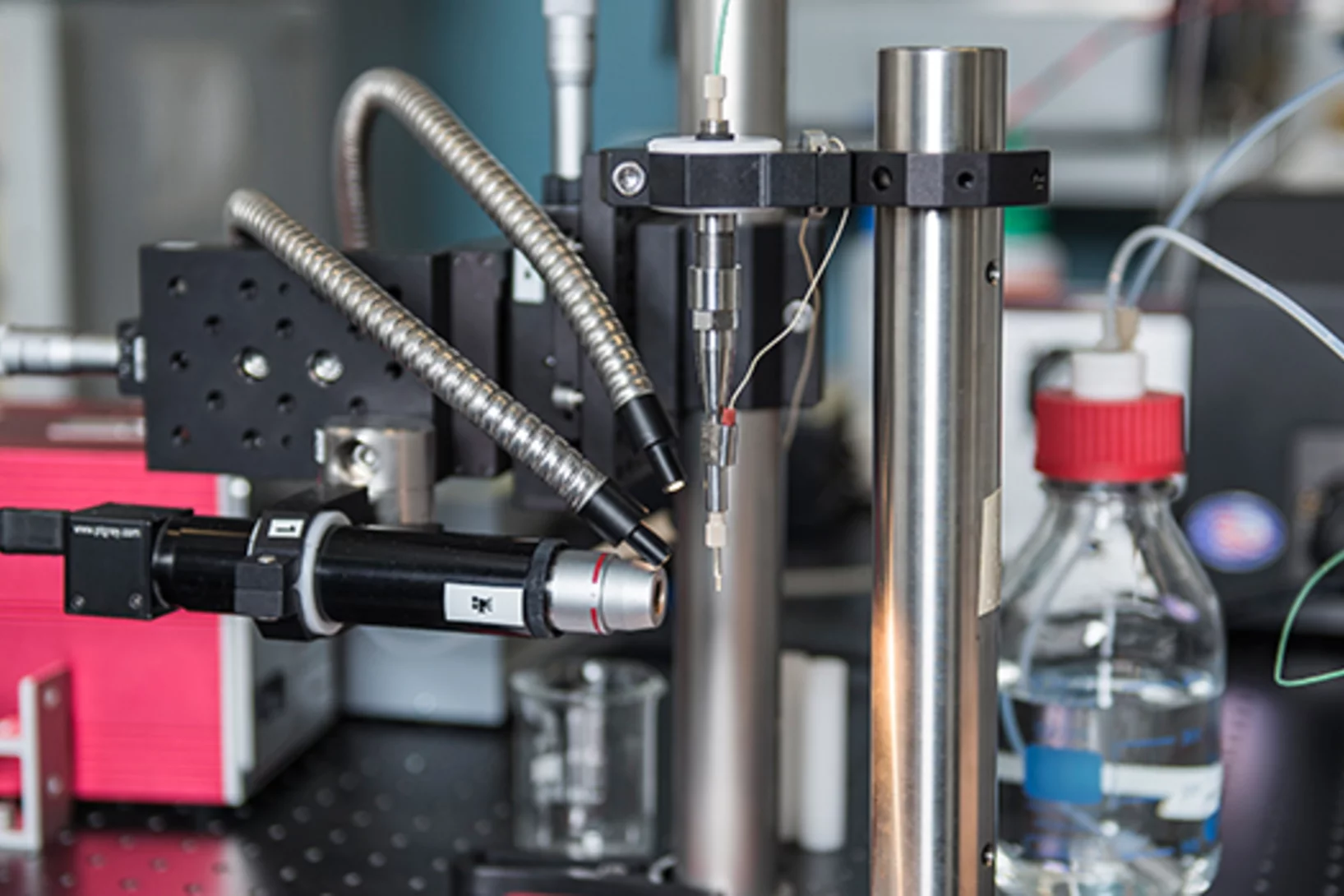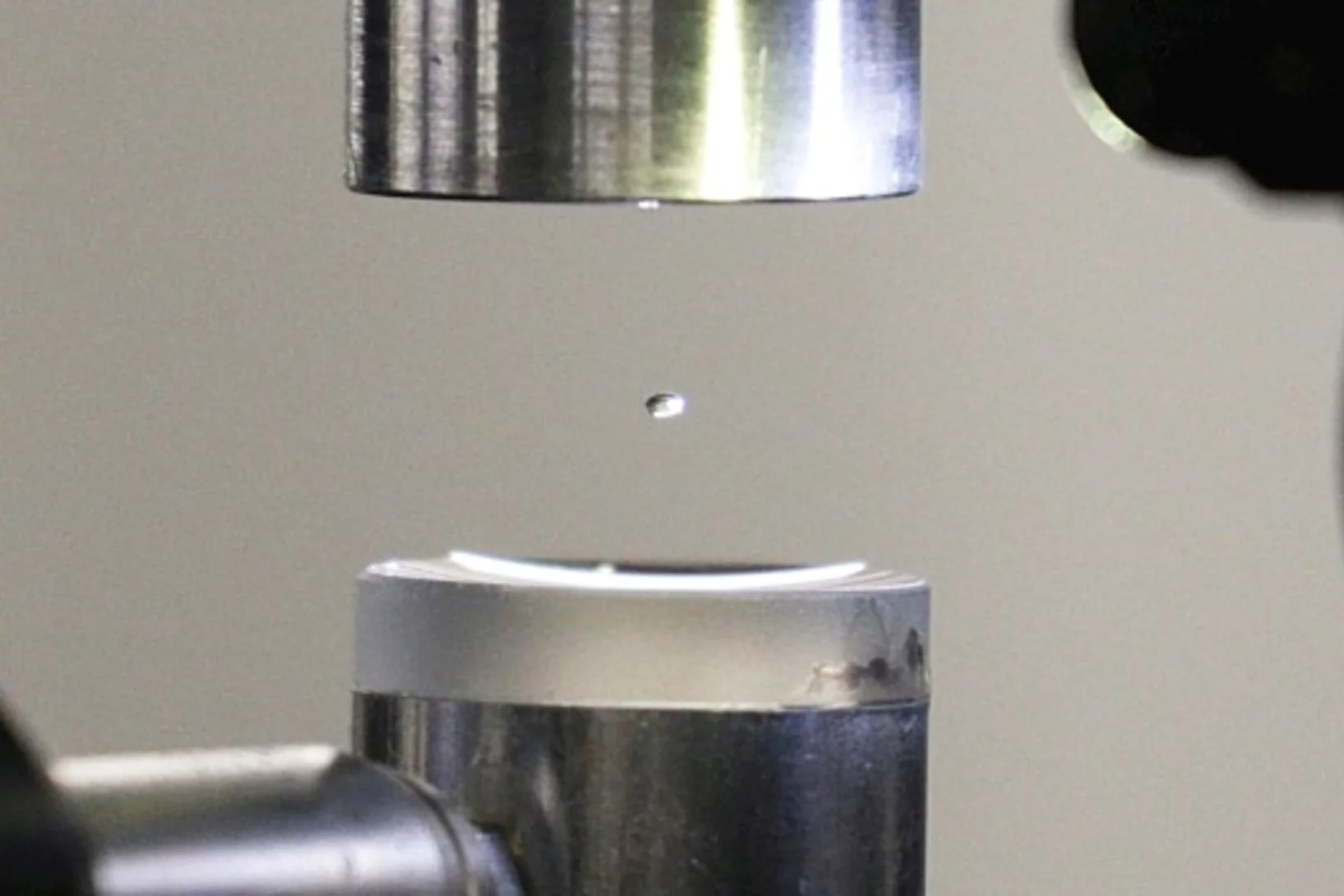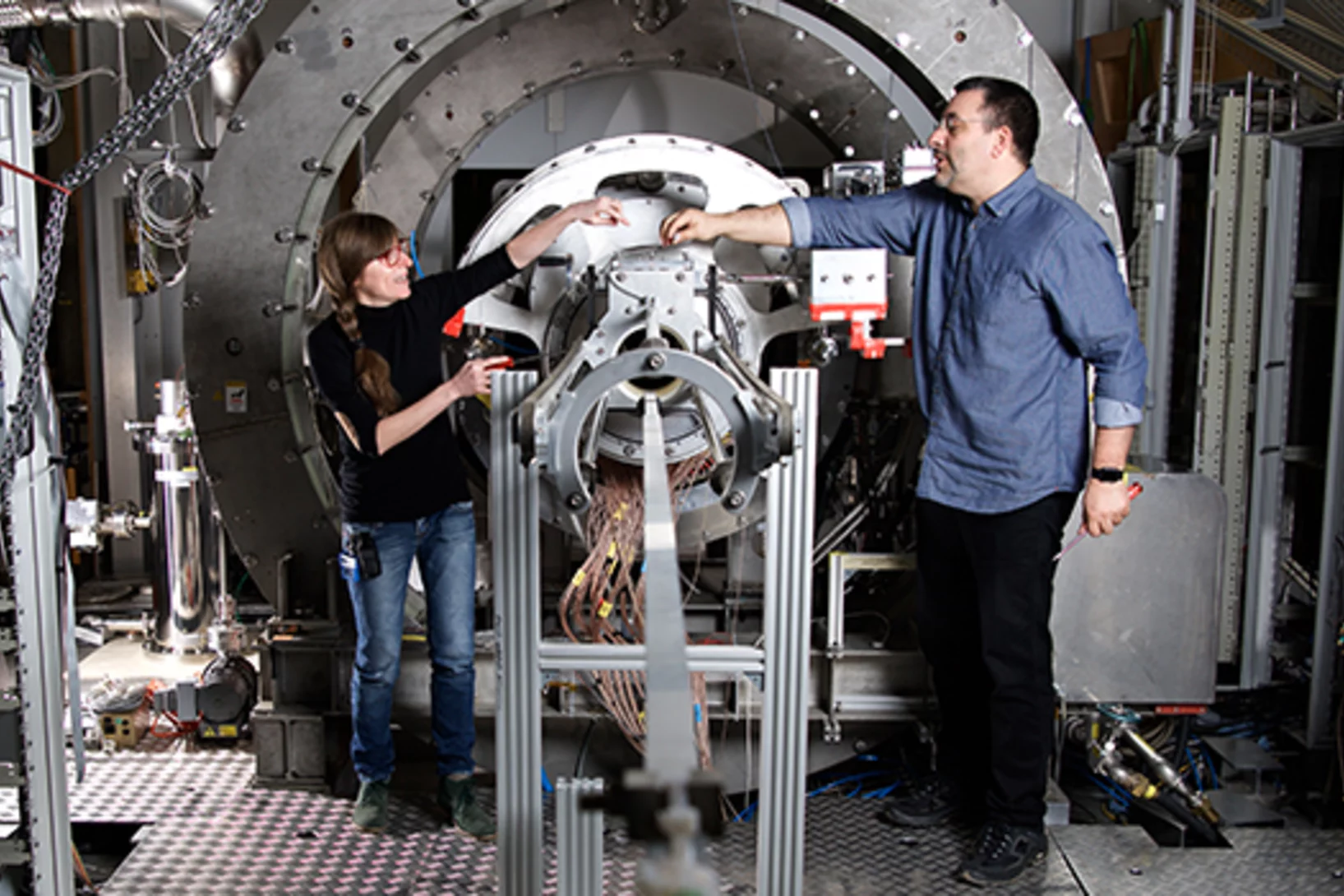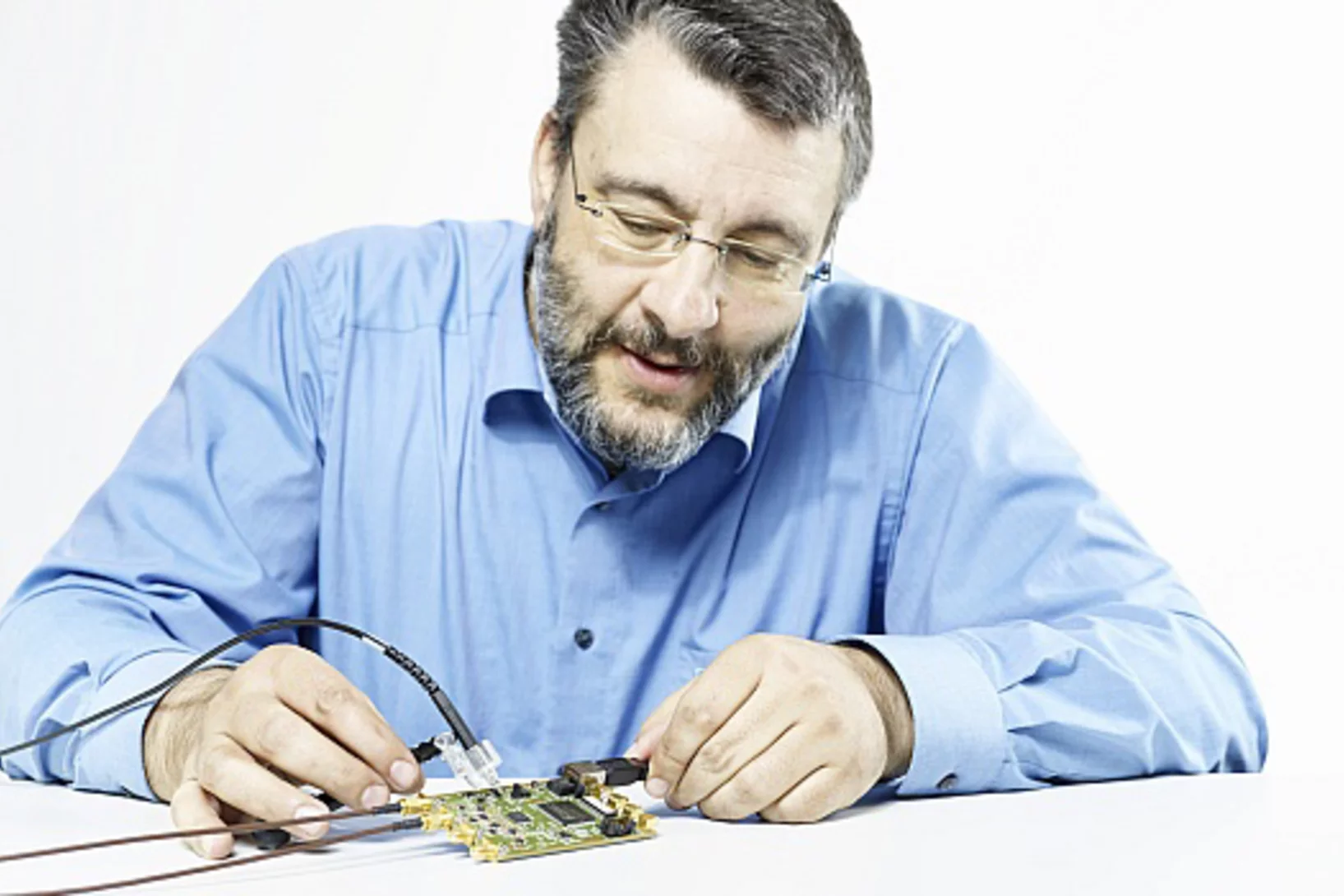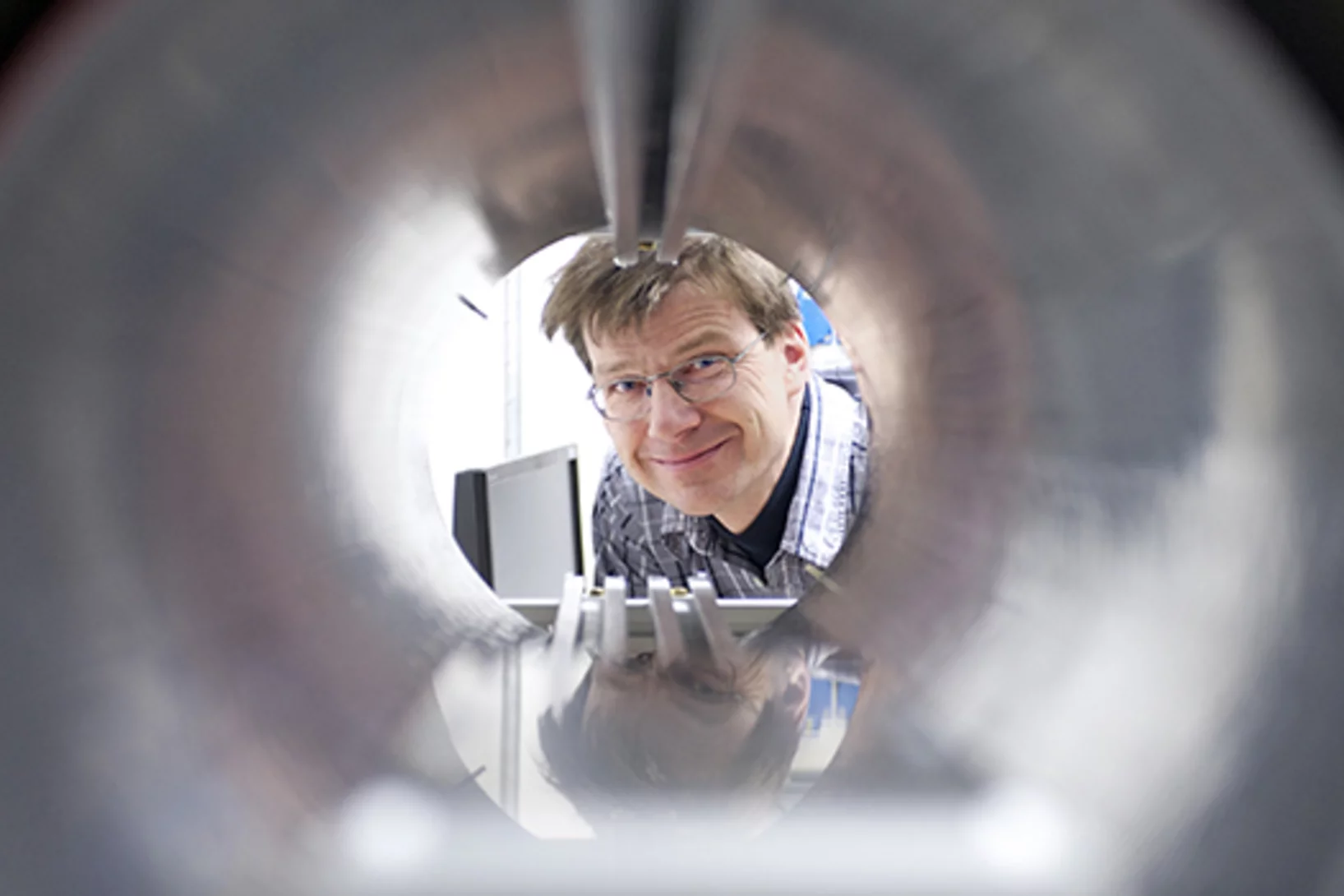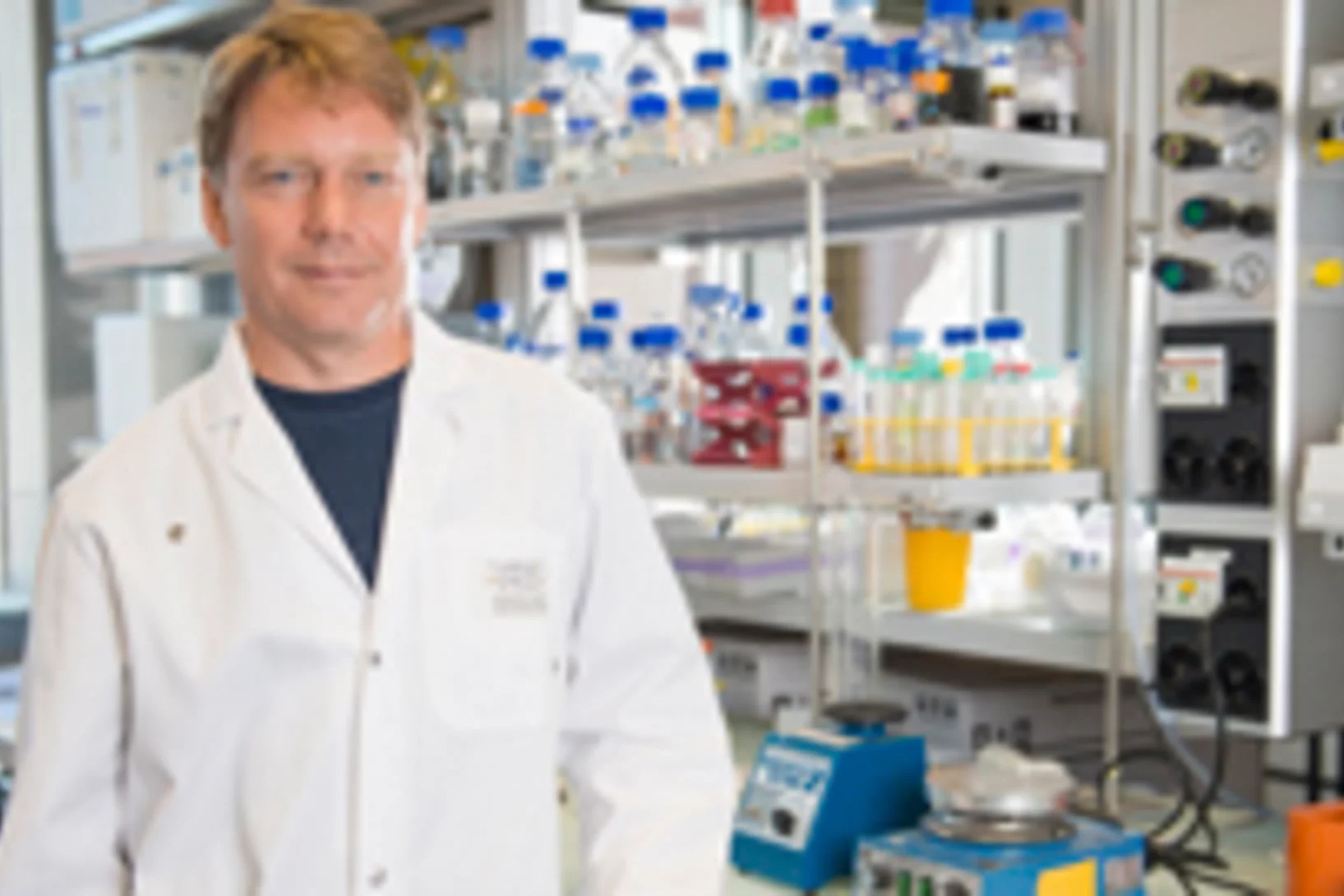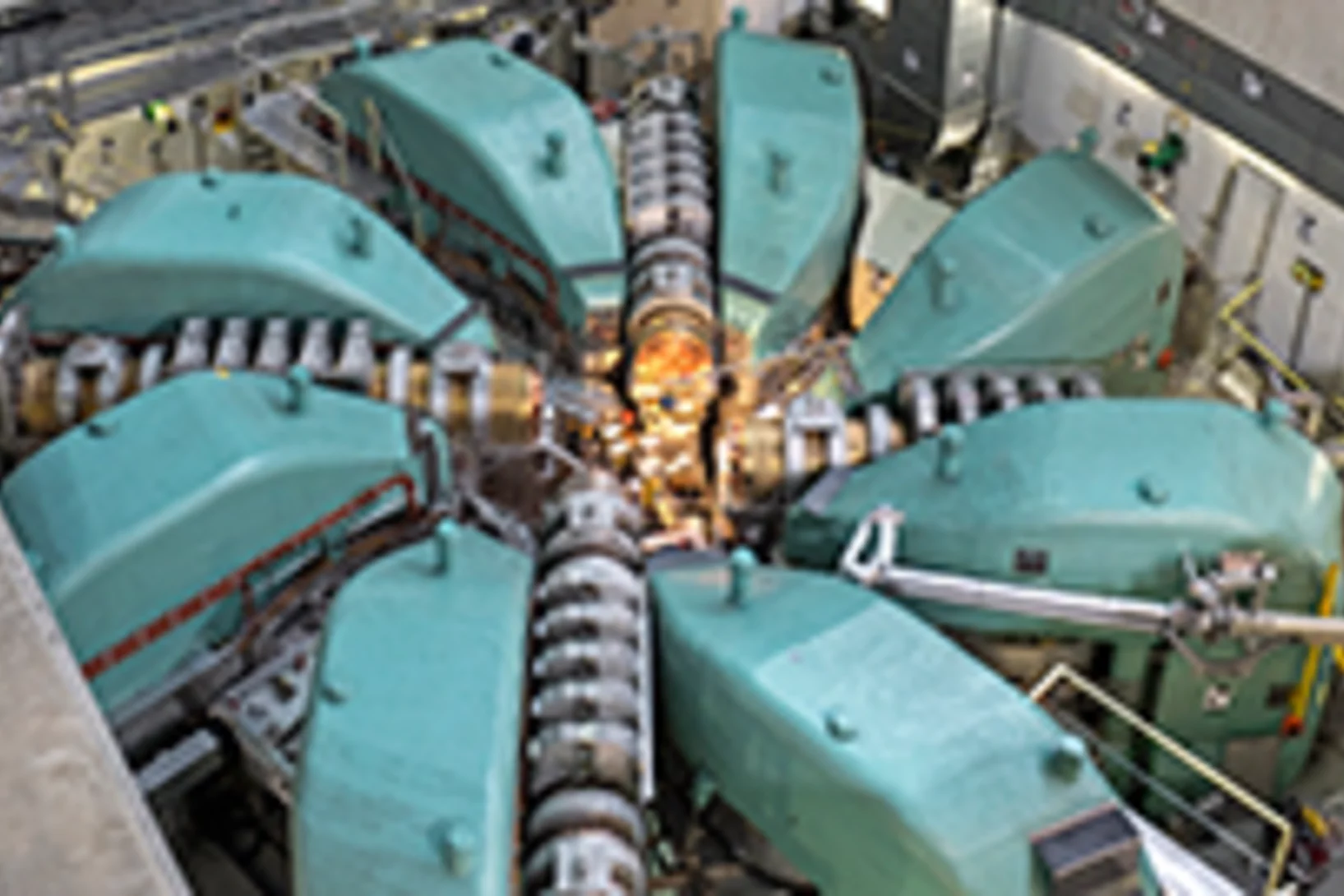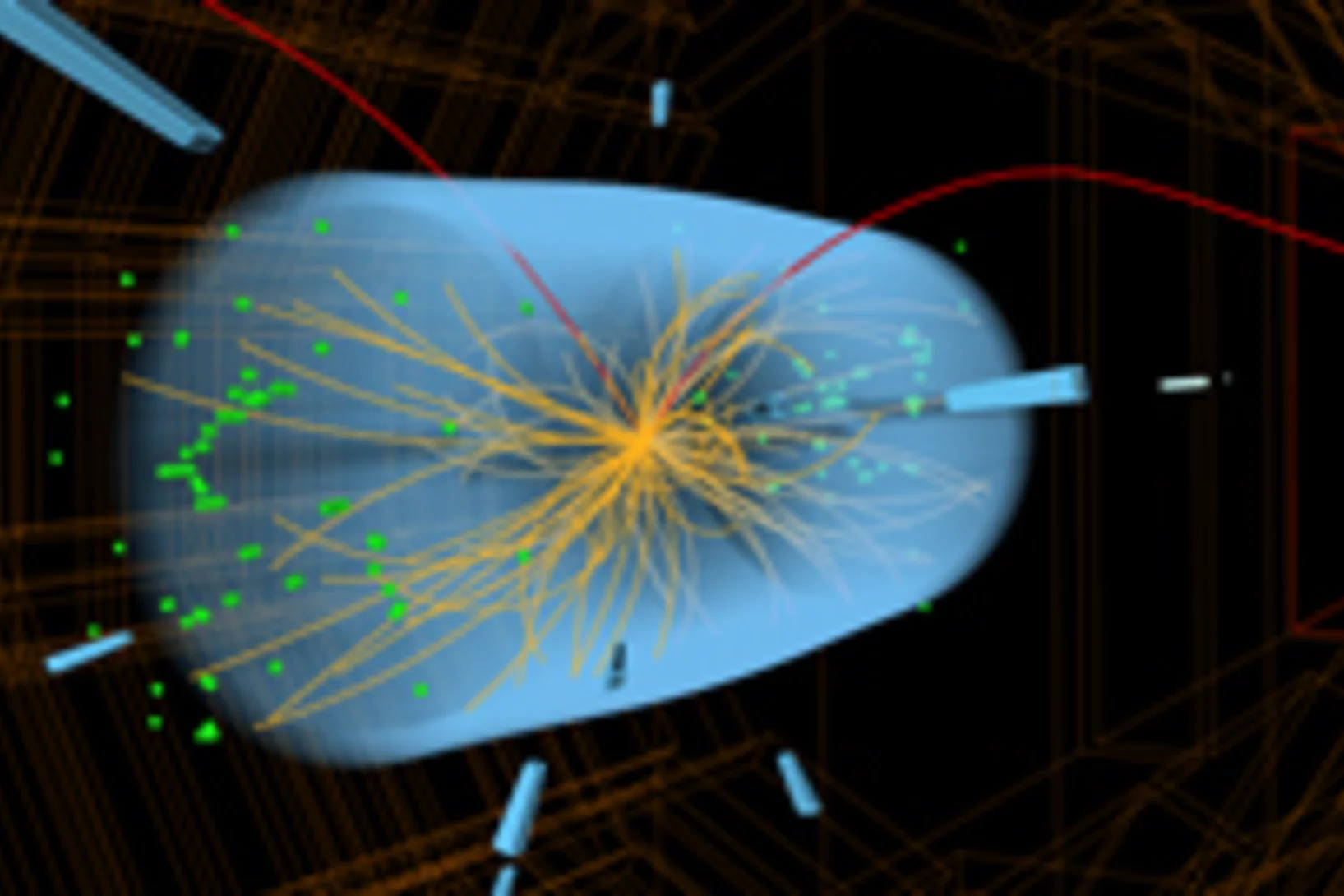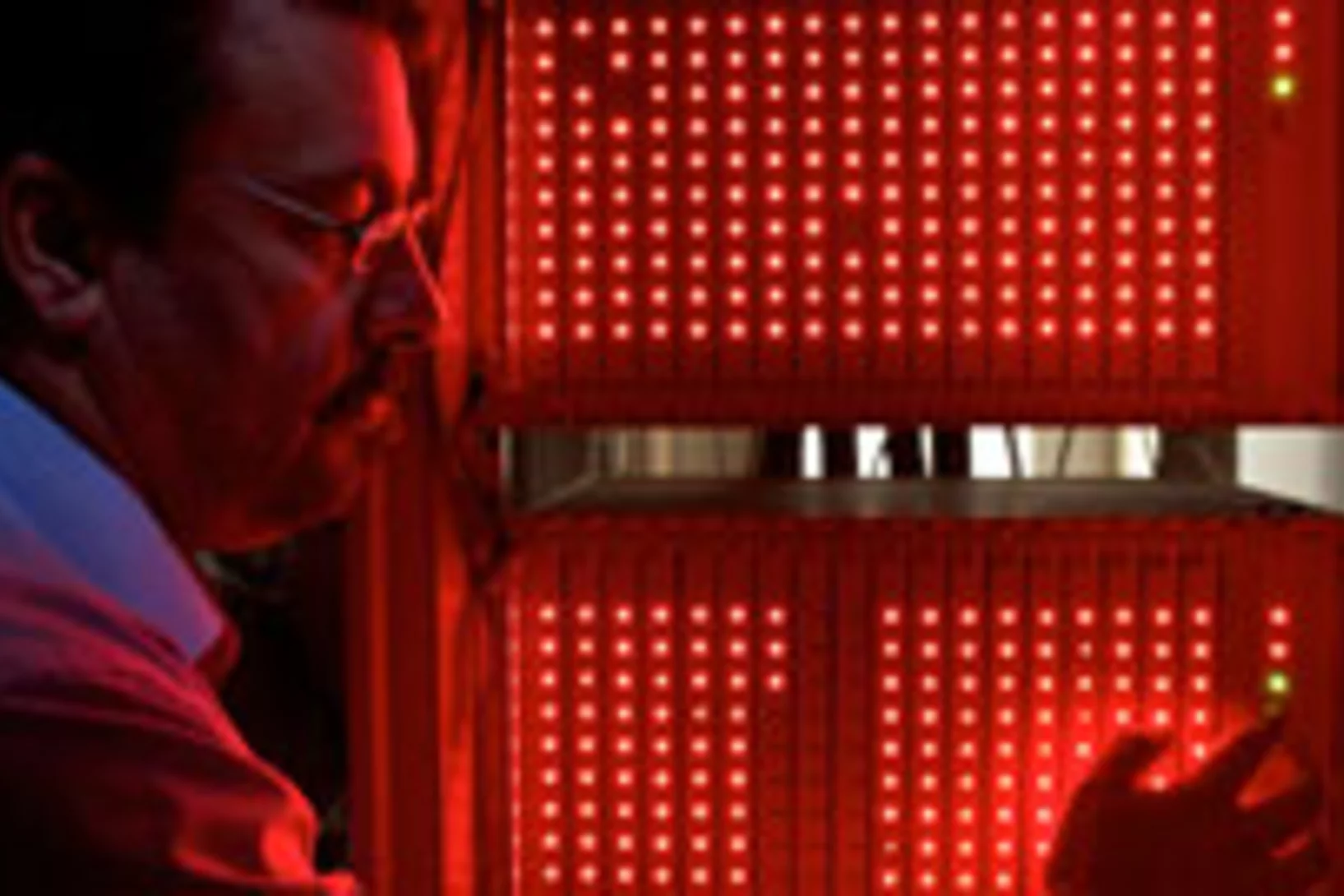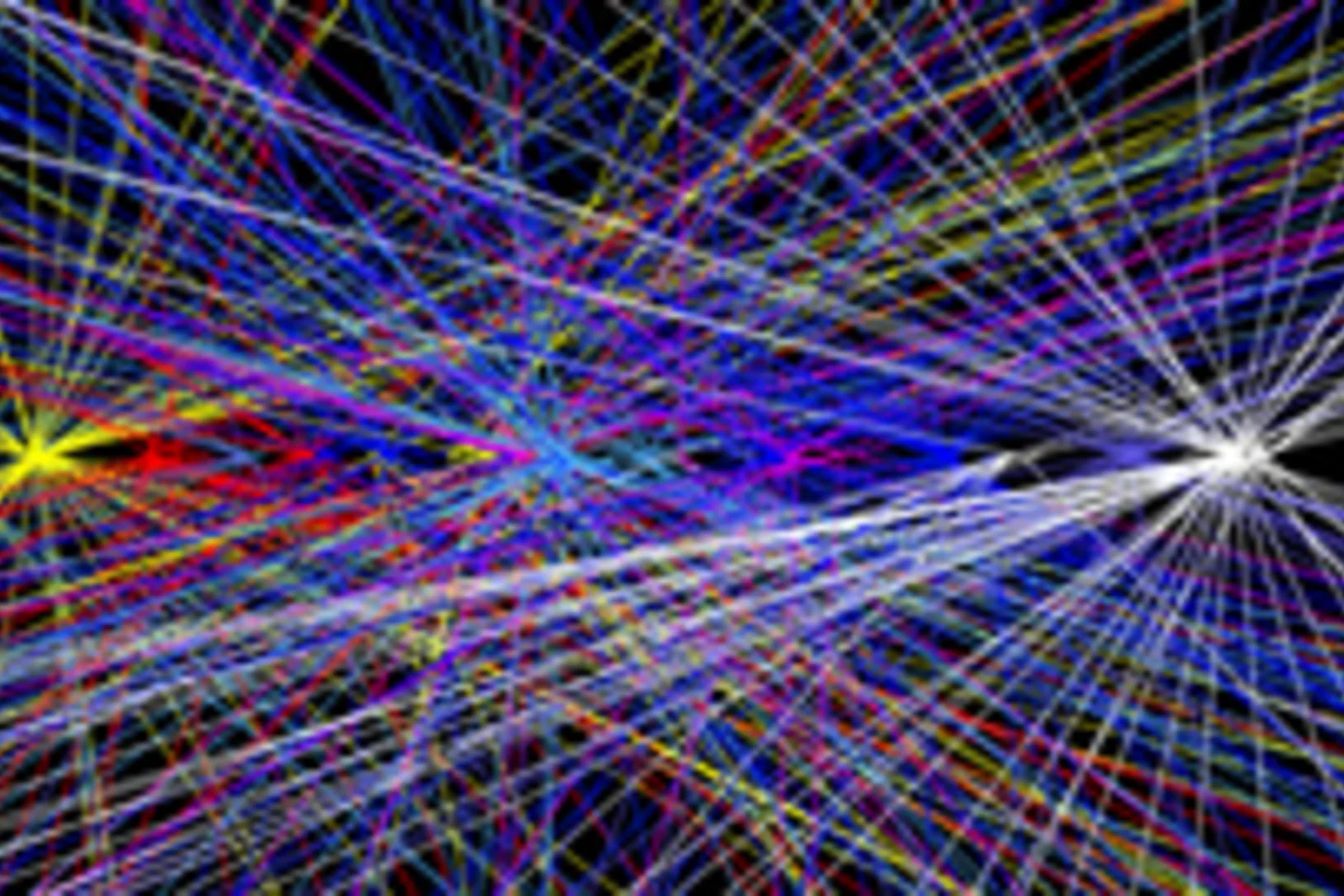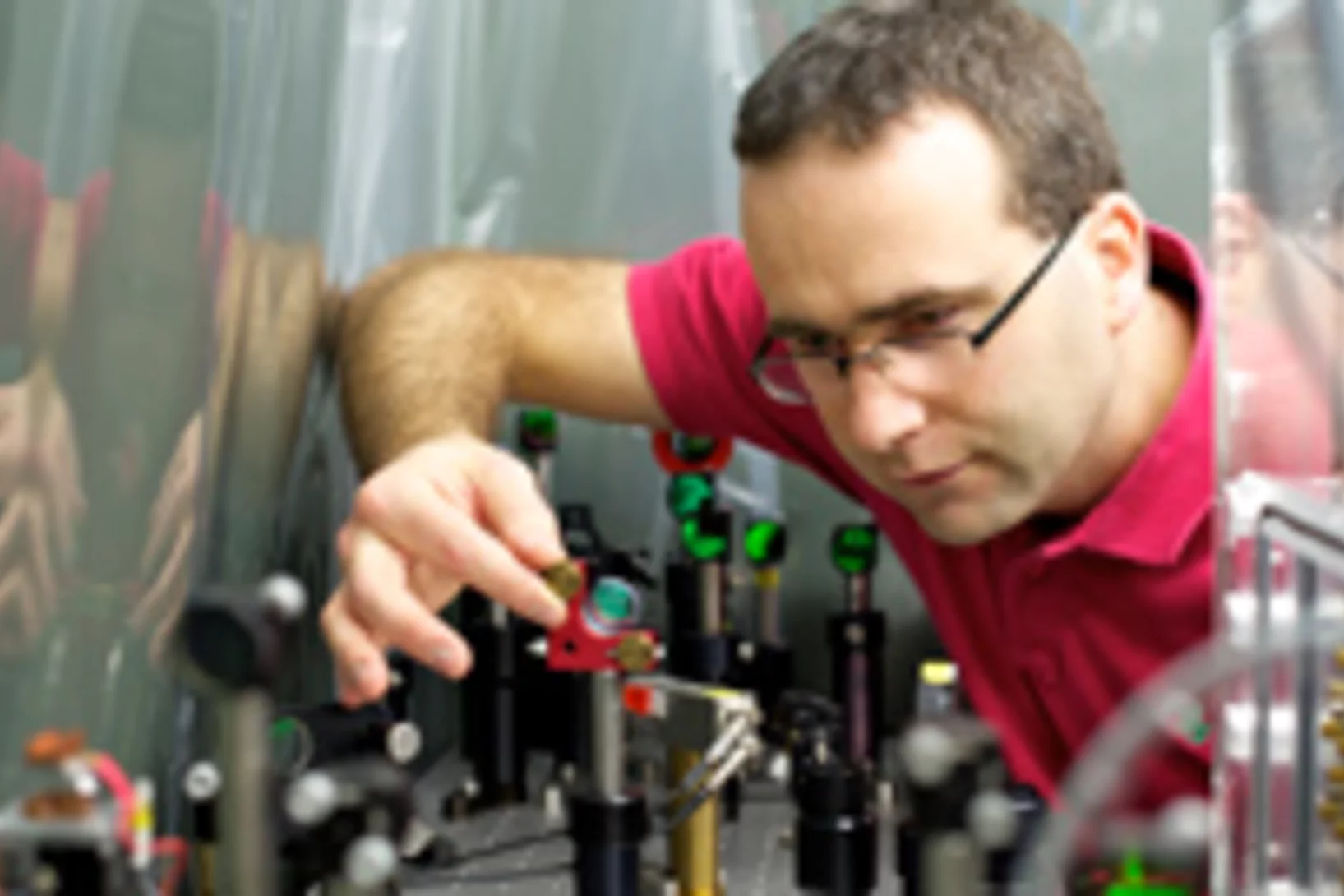New standards in nuclear physics
With unprecedented precision: PSI researchers measure the nuclear radius of muonic helium-3 and put the theories of atomic physics to the test.
With pad, pencil, and algorithms
Physicist Dominik Sidler is developing fundamental theories for previously inexplicable phenomena.
Prestigious funding for research at PSI
Concrete, chemical catalysis and the search for new physics – three PSI researchers have each received a grant from the Swiss National Science Foundation for these areas of research.
Unlocking the secrets of proteins
This year’s Nobel Prize in Chemistry goes to three researchers who have made a decisive contribution to cracking the code of proteins – important building blocks of life. However, developing applications from this knowledge, for example in medicine, requires research institutes such as PSI.
“Magic” element challenges current model of nucleosynthesis
Surprising measurements lead to the discovery of an unknown process.
Uniquely precise: New value for the half-life of samarium-146
Researchers at PSI and the Australian National University have re-determined the half-life of samarium-146 with great precision.
Nature’s sunscreen and other SwissFEL stories
From DNA repair to catalysts: how the Alvra experimental station at SwissFEL has developed into a special tool for biology and chemistry research.
A bionanomachine for green chemistry
PSI researchers have characterised a unique enzyme from bacteria that enables an important chemical reaction.
Charge fractionalisation observed spectroscopically
Quantum mechanics tells us that the fundamental unit of charge is unbreakable – but exceptions exist.
Altermagnetism proves its place on the magnetic family tree
Experiments at the Swiss Light Source SLS prove the existence of a new type of magnetism, with broad implications for technology and research.
Repairing genetic damage with sunlight
An international research team at SwissFEL of PSI has discovered how an enzyme repairs DNA damage with the help of sunlight.
The secret life of an electromagnon
SwissFEL sheds light on how lattice and atomic spins jiggle together.
A gold standard for computational materials science codes
The most comprehensive verification effort so far on computer codes for materials simulations.
Immerse yourself in the cytoskeleton
The cytoskeleton is a little marvel. Probing it promises to reveal, among other things, new possibilities for cancer therapy.
Deciphering the secrets of the brain
A place for cutting-edge research: PSI researchers to receive comprehensive funding from the US NIH for their brain research.
Mystery of microgels solved
Researchers at PSI and the University of Barcelona can explain the strange shrinking of microgels experimentally.
Hairy cells: How cilia’s motor works
Understanding this motion may help to tackle health problems that affect cilia, which range from fertility issues to lung disease and COVID-19.
Mirror, mirror on the wall…
…. Now we know there are chiral phonons for sure
An algorithm for sharper protein films
A newly developed algorithm allows measurements performed at X-ray free-electron lasers to be evaluated more efficiently.
Hunting for the radius of a proton
0.000 000 000 000 840 87 (39) metres – scientists working at PSI have come up with this astonishing figure for the radius of a proton.
How vision begins
PSI scientists have discovered the very first step occurring in the eye when light hits the retina.
Two million Swiss francs granted to search for new physics
Philipp Schmidt-Wellenburg will set up a novel experiment at a muon beamline at PSI.
How to get chloride ions into the cell
A molecular movie shot at PSI reveals the mechanism of a light-driven chloride pump
More insight into how vision works
PSI scientists have shed light on the structure of an important component of the eye: CNG ion channels whose job is to relay optical signals to the brain.
The Swiss research infrastructure for particle physics CHRISP
Researchers are looking for deviations in the current standard model of physics and want to find out how our universe is constructed.
Size of helium nucleus measured more precisely than ever before
In experiments at the Paul Scherrer Institute PSI, an international research collaboration has measured the radius of the atomic nucleus of helium five times more precisely than ever before. The new value can be used to test fundamental physical theories.
Magnetically shielded from the rest of the world
At the Paul Scherrer Institute PSI, researchers together with a company have constructed a room that is one of the best magnetically shielded places on the earth. With its help, they want to solve the last mysteries of matter and answer a fundamental question: Why does matter - and thus why do we - exist at all?
A protein's unexpected "doming"
Researchers have coaxed a secret out of the vital protein cytochrome c that it kept well-hidden up to now. Measurements at the X-ray free-electron laser SwissFEL reveal structural changes that science had previously ruled out for this kind of biomolecule.
In search of new physics
With the high-intensity proton accelerator HIPA, the Paul Scherrer Institute generates elementary particles to clarify how the universe is structured. Using pions, muons, and neutrons, the researchers conduct experiments to test the standard model of particle physics.
Long-lived pionic helium: Exotic matter experimentally verified for the first time
Exotic atoms, in which electrons are replaced by other particles, allow deep insights into the quantum world. After eight years, an international group of scientists have succeeded in a challenging experiment conducted at PSI’s pion source: they created an artificial atom called “pionic helium”.
Tracking down the mystery of matter
At the ultracold neutron source at PSI, researchers have measured a property of the neutron more precisely than ever before: its electric dipole moment. That's because the search is still on for an explanation of why, after the Big Bang, there was more matter than antimatter.
Molecular scissors stabilise the cell's cytoskeleton
Researchers at the Paul Scherrer Institute PSI have an important part of the regulatory cycle that is involved in the formation and degradation of the cytoskeleton. Among other things, they have watched molecular scissors at work.
This time, it's all bio: SwissFEL makes protein structures visible
For the development of new medicinal agents, accurate knowledge of proteins is crucial. In a pilot experiment, researchers have now, for the first time, used the X-ray free-electron laser SwissFEL of PSI for the examination of protein crystals.
Material from PSI helps to check inconsistencies in the Big Bang theory
Shortly after the Big Bang, radioactive Beryllium-7 atoms were formed, which today, throughout the universe, they have long since decayed. A sample of beryllium-7 artificially produced at PSI has now helped researchers to better understand the first minutes of the universe.
The hard worker from Val Mesolcina
For Aldo Antognini, physics and conviviality are in the bloodPSI researcher Aldo Antognini has received more than 2.2 million Swiss francs from the EU for his latest experiment. He wants to find out how magnetism is distributed in the proton. The particle physicist will be able to apply not only his scientific and technical talents, but his social flair as well.
Catching proteins in the act
Proteins are indispensable building blocks of life. They play a vital role in many biological processes. Researchers have now been able to show how the ultrafast processes by which proteins do their work can be studied with free-electron X-ray lasers such as SwissFEL at the Paul Scherrer Institute PSI. Free-electron X-ray lasers generate extremely short and intense pulses of X-ray light. Currently there are just two such facilities in operation, worldwide. The results were published in the scientific journal Nature Communications.
Experiment in a hovering droplet
At the PSI, the exact structure of proteins is deciphered in the standard way, with X-rays. Now two PSI researchers have used a clever trick to advance this method further: Instead of pinning down the proteins, they are studying them within a levitating drop of liquid.
Five hundred thousand times less likely than winning the lottery
Measuring the rarity of a particle decayIn the so-called MEG experiment at the PSI, researchers are searching for an extremely rare decay signature from a certain kind of elementary particles known as muons. More precisely, they are quantifying its improbability. According to their latest number, this decay occurs less than once in 2.4 trillion events. By means of this result, theoretical physicists can sort out which of their approaches to describing the universe will hold up against reality.
Measuring the simultaneity
What does a physicist do when his experiment needs an extremely precise time measurement? So precise that existing electronics cannot help him? A scientist from the Paul Scherrer Institute PSI simply decided to develop his own solution. The result is called DRS4, a high-precision electronic chip that could unlock the physics of our entire universe. As an additional benefit, the chip is already helping doctors to localise brain tumours with great accuracy.
New method will enable most accurate neutron measurement yet
Our universe consists of significantly more matter than existing theories are able to explain. This is one of the great puzzles of modern science. One way to clarify this discrepancy is via the neutron’s so-called electric dipole moment. In an international collaboration, researchers at PSI have now devised a new method which will help determine this dipole moment more accurately than ever before.
New details of the transmission of stimuli in living organisms unveiled
Researchers unveil new details of how cells in a living organism process stimuli. So-called G-proteins, which help conduct external stimuli that reach a cell into its interior, play a central role here. For the first time, the study shows which parts of the G-proteins are vital for their function. Researchers from the Paul Scherrer Institute PSI, ETH Zurich, the pharmaceutical company Roche and the British MRC Laboratory of Molecular Biology report their results in the journals Nature and Nature Structural and Molecular Biology.
Together, not alone
Decoding biomolecules at SwissFEL and SLSProteins are a coveted but stubborn research object. A method developed for x-ray free-electron lasers and PSI’s future SwissFEL should now help researchers to make good headway in this field. It involves x-raying many small, identical protein samples consecutively at short intervals, thereby avoiding the main problem that protein research has faced thus far: producing samples in a sufficient size.
The proton accelerator at the Paul Scherrer Institute: forty years of top-flight research
Materials research, particle physics, molecular biology, archaeology à for the last forty years, the Paul Scherrer Institute’s large-scale proton accelerator has made top-flight research possible in a number of different fields.
Rare particle decays support standard model
Researchers from the Paul Scherrer Institute have observed for the first time the extremely rare decay of the Bs meson into two muons. They have determined its decay frequency with sufficient accuracy using data collected by the CMS detector at CERN. Their result agrees with the predictions of the standard model of particle physics.
The quest for an elusive white crow of particle physics
A very rare process in nature should best decide on how we should describe our universe in the future. It is the particular decay of a particular type of elementary particle: the muon. These particles are short-lived and decay into a variety of other particles. According to one theoretical model, a very particular decay process is practically forbidden, whereas according to another it should be allowed. Which theory is correct? By observing many hundreds of trillions of muon decays very precisely, physicists at the Paul Scherrer Institut have come a step closer to solving this puzzle. They have now published their results in the journal Physical Review Letters.
Searching for the Higgs boson: PSI inside
Higgs Particle Found announced the media triumphantly in July 2012. But for Roland Horisberger, particle physicist at PSI, this was a premature conclusion: It will take at least another five years before we can be sure of that. Whatever the findings à whether this is the original Higgs boson, or only one of the theoretical Higgs-like particles à one can surely put a tag on them that reads PSI inside.
A glimpse inside the control centres of cell communication
Numerous processes taking place within our body, such as sight, smell or taste, are accomplished by an important family of sensors on cell surfaces, which are known as G protein-coupled receptors (GPCR). Researchers have now compared the hitherto known structures of GPCRs and discovered a stabilising framework of fine struts that is characteristic for the architecture of the entire GPCR family. Knowledge about this constructional feature, which has been conserved over the course of evolution, can be of significant assistance in the development of new pharmaceuticals.
Proton size puzzle reinforced!
An international team of scientists confirmed the surprisingly small value of the proton radius with laser spectroscopy of exotic hydrogen. The experiments were carried out at PSI which is the only research institute in the world providing the necessary amount of muons for the production of the exotic hydrogen atoms made up of a muon and a proton.


